The post Should I Buy an Electric Bike or an Electric Scooter? appeared first on eRide Guides.
]]>After all, they both function the same way, have two wheels, and have features that resemble their pedelec scooter and bike counterparts.
The major differences between an e-bike and e-scooter are the laws that govern their use. However, there are still minor differences between weight, speed, price, range, safety, durability, and overall look. You may even want both electric vehicles for various purposes.
To clarify, in this article, ‘scooter’ won’t refer to the four-wheeled variety that’s used by people with mobility issues nor the push wheel kind.
E-scooters are often interchangeable with mopeds because they are both electric-powered vehicles without pedals.
In this article, we will engage in the analysis of both e-bikes and e-scooters and compare which is better and which will attend to your daily needs.
Before we do that, let’s make a distinction between human-powered bikes and scooters and the definition of electric vehicles.
10 Reasons to Buy an Electric Bike or E-Scooter
If you’re thinking of joining in on the electric transport craze, consider these reasons to pick one up before getting into the more important details.
- It doesn’t take a lot of practice to ride an electric vehicle safely.
- You can get a great cardio workout with an electric bike.
- Both the e-scooter and e-bike are more affordable than a car or motorcycle.
- E-bikes and e-scooters enable seniors and the physically disabled a method of travel.
- Motors will kick in on an e-bike if you’re too tired to pedal.
- They can reach high speeds, although higher speed models may require licenses or road use.
- Capable of riding in bad weather conditions or on slight inclines with motor support.
- Requires little maintenance in comparison to a motorcycle or car.
- Both e-bikes and e-scooters allow you to sit or stand.
- E-vehicles use simple throttle technology to power and change its speed.
Why Electric Vehicles are Perfect for Cities
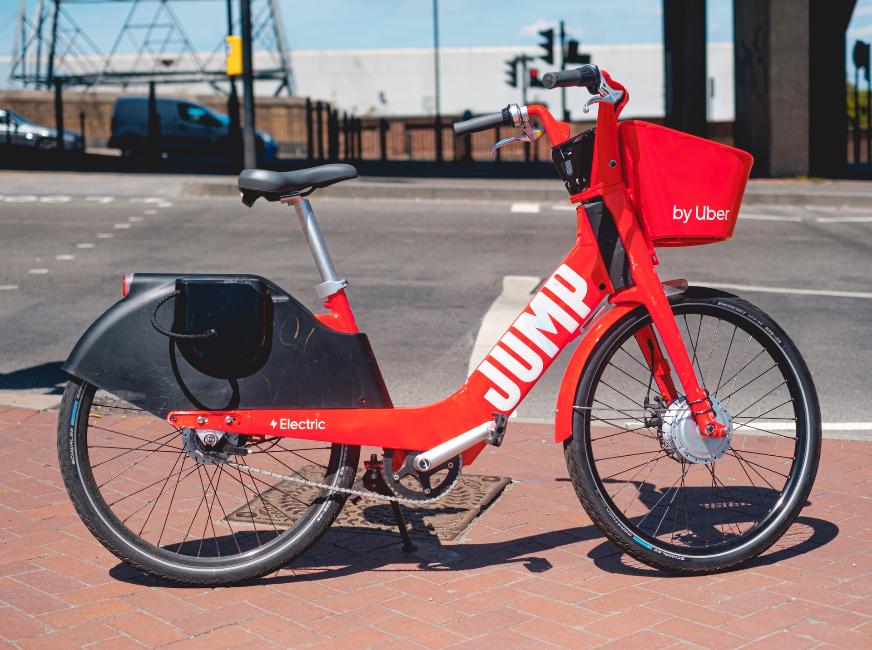
Photo Courtesy: Ehimetalor Akhere Unuabona/Unsplash
Depending on where you live, purchasing a car is out of reach or impractical. If you live in LA and drive to work, you’re familiar with the slow-moving highway traffic and frequent accidents that make commuting even slower.
On top of that, you need to spend time looking for parking in a busy area. Often, it’s more cost-effective and less stressful to take a bus or walk because you save money on gas and don’t need to find a space to park.
Even though public transport solves most of these problems, busses run on their own schedule, only drop you off at key locations, and are often crowded and unsanitary. Now, you have no control over your trip, and it may take a large chunk of time out of your day to catch the bus.
An e-bike or e-scooter solves all of your problems, and in many cases, they are better for travel than trains, buses, or cars. A folding scooter or bike doesn’t even need a parking spot – you can just bring it with you while you shop or place it under your desk at work.
Can’t a Human Powered Bike or Scooter do the Same Thing?
Absolutely. A human-powered scooter or bike can take you where you need to go and are a practical means of transportation. They also give you a cost-effective method of exercise and are an eco-friendly option that most people can use daily.
However, many people don’t live close to their work, or they don’t have the physical fitness or capability to bike for miles a day. Even for those who are capable of biking long-distances, you will almost always arrive a sweaty mess.
An electric bike or scooter is accessible for all ages, fitness levels, and physical capabilities because the motor provides additional support for longer or harder commutes. You won’t find yourself stranded if you can’t pedal or kick your analog vehicle long distances.
E-Bikes vs. E-Scooters
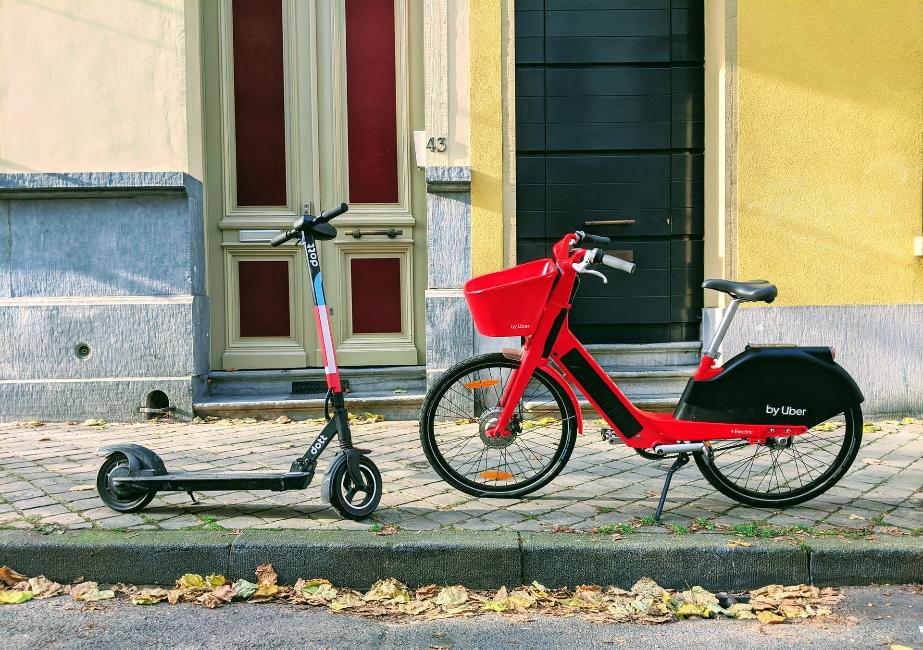
Photo Courtesy: Lucian Alexe/Unsplash
There is some confusion surrounding e-bikes and e-scooters. Even though both bikes are 2-wheeled, they feel different when you ride them, and their legal requirements, mileages, and benefits vary greatly.
Electric Bikes
Electric bikes are 2 wheeled bicycles that come outfitted with functional pedals – usually. Some e-bikes won’t come with pedals, but those are usually models that are small, less than $500, or aren’t fitted initially because they come at an added price.
Even though e-bikes look similar to human-powered bicycles, they have motors planted on the frame. Typical places to find the motor vary on model and manufacturer, but a rear hub motor, front hub motor, or center hub motor are common.
E-bikes will also have a battery to power the motor, a drive train to turn the power generated to propel the bike forward, and a throttle to manage and change speeds. Otherwise, an electric bike has the same parts and components as a regular bicycle.
Pedal assisted e-bikes give your bike an extra boost while pedaling, and some models require you to pedal to start the motor. While some e-bikes will need physical effort to maintain speeds, others will either make pedaling optional or will be 100% motor functionality.
Electric Scooters
Electric scooters are a two-wheeled vehicle that differs from a skateboard because it has handlebars. In comparison to an analog scooter, the e-scooter will have a motor and is self-propelled after the users’ initial kick-off from the pavement.
The powerful accumulator can help you overcome a more considerable distance than what may have been capable of a human-powered scooter. You also won’t have to push off the ground to keep momentum continuously – you just have to use the throttles on the handlebars to maintain speeds.
Some e-scooters will include a seat that makes them more similar to a moped than a scooter, but the seat can add extra comfort for anyone who doesn’t want to stand for long distances. E-scooters with seats are more expensive than standing versions.
Since e-scooters never come with pedals, there aren’t pedal-assisted scooters. If you want to go faster, you could kick on the ground – but you’ll probably hurt yourself. E-scooters aren’t for people who wish to exercise during their commute.
Legal Requirements
The United States has confusing laws when it comes to understanding what a street-legal electric scooter is. This is because the US federal law governing electric bikes also applies to electric scooters as well.
Electric Bikes
US2002 Federal Law states that an electric bike will become street legal if it has a top speed of less than 20 mph (32 km/h), and the motor power is below 750W. However, because most states don’t follow this law, or have implemented a Class system for bikes, this isn’t always true.
The chart below shows legal bike speeds (20 mph – 28 mph) and illegal speeds (35mph or higher). It’s possible to rig an e-bike to go faster than what’s listed on this chart, but it won’t be road legal.
| Battery + Motor (Flat Terrain 165 lbs Male) | Max Speed | Average E-Bike Cost | Average Charge Time |
| 250w | 20 mph (32.19 km/h) | $500 – $1000 | 20 minutes |
| 500w | 25 mph (40.23 km/h) | $750 – $1250 | 40 minutes |
| 750w | 28 mph (45 km/h) | $750 – $1500 | 60 minutes |
| 1000w | 35 mph (56.32 km/h) | $1000 – $1500 | 80 minutes |
| 1500w | 40 mph (64 km/h) | $1500 – $2000+ | 120 minutes |
The 3-Class System
Here is a breakdown on which e-bikes classify for Class 1, Class 2, and Class 3 under the legislation. Since 2014, the national bicycle advocacy group PeopleForBikes has helped over 30 states pass standardized regulations for e-bikes with the use of the 3-Class System.
- Class 1: Assists pedaling but not your throttle, these e-bikes are passive and are allowed to function on bike paths. Pedal-assist only (absolutely no throttle), and have a maximum assisted speed of 20 mph (32.19 km/h).
- Class 2: Known as low-speed throttle-assisted e-bikes. These e-bikes have motors that proper the cyclist without pedaling. The rider cannot exceed more than 20 mph (32.19 km/h) like Class 1, accept Class 2 e-bikes must be throttle-assisted.
- Class 3: Known as speed pedal-assisted electric bikes and provide assistance to the rider if they’re pedaling. Cannot have a throttle. Class 3 e-bikes can have a maximum assisted speed of 28 mph (45 km/h). However, the US only allows bikes on the road that have a maximum of 20 mph (32.19 km/h).
All e-bikes, no matter the Class, limit the motor’s power to 1 horsepower (750W). Be aware that the class system is specific to e-bikes, whereas e-scooters have their own system in place that is similar, but not the same.
Electric Scooters
In the United States, electric scooters are allowed on roads that lack bicycle lanes as long as they don’t exceed speed limits of 25 mph (40 km/h). Similar to e-bike regulations, this varies based on state. E-scooters are sometimes their own category but are usually treated as e-bikes.
California, for example, uses the classification of Personal Light Electric Vehicles and can ride on pavements, roads, and cycle lanes as long as you’re over the age of 16 and are wearing a helmet. However, in San Francisco, it’s illegal to leave your power scooter unattended.
E-scooters don’t require a license to operate, although some US states do require one if you want to operate an e-bike. Always check your local laws before operating either electric vehicles to ensure you aren’t breaking any state laws.
Overall, it’s easier to own an e-scooter because less licensing is needed to operate one, and you are less likely to break any laws. Just ensure that you wear a helmet with an e-scooter and follow traffic rules in your state to avoid a ticket.
Price Comparison
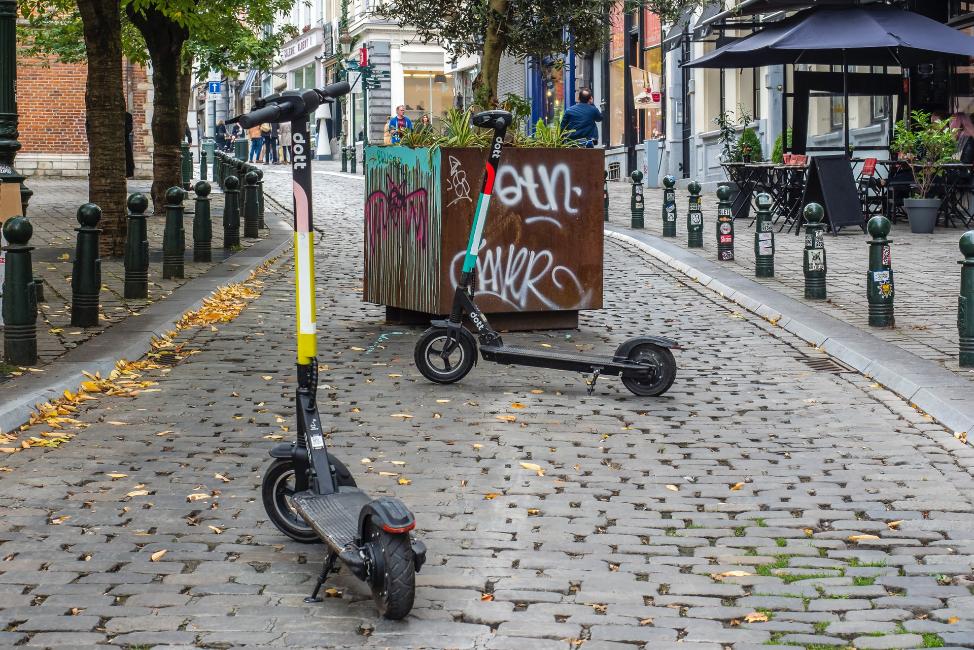
Photo Courtesy: Alexander Schimmeck/Unsplash
On average, e-bikes are more expensive than scooters on the initial purchase, but in general, electric-powered vehicles are cheaper than gas-powered ones. When compared, electric scooters and electric bikes generally have a lower running cost than gas-powered vehicles.
A 5 km (3 miles)ride will only cost you 5 cents in electricity, whereas gas can cost upwards to a dollar per 4km (2.5 miles). However, calculating the cost of the vehicle doesn’t just start and end when you buy the product. You also need to factor in the maintenance and quality of the e-vehicle.
Both the range of the prices for electric bikes can start low (less than or equal to $500), they can sky-rocket as their specifications increase. Due to the popularity of e-bikes, it’s likely the e-bikes will become cheaper as the parts become cheaper to produce.
Even though an e-scooter is cheaper initially, electric bikes are cheaper to maintain if you don’t have expertise in electric vehicles. Maintaining your e-bike is more convenient than e-scooters are because more mechanics know how to service their parts.
E-bikes have one significant value advantage: you can electrify most regular bikes. E-scooters don’t have conversion kits readily available, but e-bikes do. For example, a conversion kit like Swytch can quickly turn any human-powered bike into a motor-powered one.
In general, higher-priced e-bikes or e-scooters will provide a better range, higher speeds, and are made of higher quality material. Paying more for an e-vehicle also translates to lighter weights rather than a jump in raw power once pricing exceeds $1000.
Portability Comparison
Unless you have a scooter that’s as big as a moped, e-scooters are almost always more portable than e-bikes. Most scooters are tested to fit in a trunk or sedan and are allowed on public transportation and Ubers. E-bikes are often too big for most cars.
E-scooters are also lighter than e-bikes because there are fewer components on the scooter itself. A scooter is basically 2 long pieces of metal, 2 wheels, and 2 handles. An e-bike has more complicated machinery and is usually heavier and has a bulkier frame.
Few e-bikes weight less than 40 lbs (18 kg), and only a few expensive (over $1500) e-bikes will weigh less than 30 lbs (13 kg). More affordable models will run you higher than 60 lbs (27 kg). However, e-scooters average 30 to 50 lbs (13 kg to 22 kg).
These comparisons are not a hard and fast rule – some e-scooters and e-bikes are small enough to fit in suitcases. Overall, scooters are usually less expensive, smaller, and more portable, whereas e-bikes can be bulky, heavy, and may not always bend in half.
Range Comparison

Photo Courtesy: Galen Crout/Unsplash
E-bikes have better ranges than e-scooters – period. It’s rare to see an e-scooter go beyond 40 miles (64 km) on a single charge, but many e-bikes will go at least 70 to 120 miles (113 to 193 km). On top of that, e-bikes can go farther – at a lower price.
Unfortunately, once your e-scooter runs out of juice, you’ll need to kick the ground to get moving again. However, it’s harder to do so because the scooter is incredibly heavy. An e-bike has a pedal assist and constant momentum, which makes pedaling an e-bike effortless.
Still, if your battery does run out of the scooter, you can always call a cab because they can fit in the trunk. With an e-bike, you’ll have no choice but to power it yourself because most Ubers and taxis won’t let you store a bicycle in a car.
Exercise Comparison
If you want to use your mode of transportation as an exercise device – don’t pick an e-scooter. Sure, you can push the scooter along, but it won’t provide you the type of full-body exercise that a pedantic e-bike can.
Riding an e-bike gives you the option of a serious workout, and more often than not, e-bike riders get more exercise the cyclists. E-bike riders tend to make longer commutes, which usually involves pedaling to either get to the destination faster or because the option to exercise is already there.
Lugging a 70 lbs (31 kg) e-bike up a hill with the assist turned off will give you quite the workout and will undoubtedly activate your quadriceps. An e-scooter can’t do that; it would actually be safer and faster to walk up a hill while bench pressing a piece of metal.
Speed Comparison
Both the e-scooter and e-bike are capable of speeds faster than their human-powered equivalents. In the Legal Requirements section, we governed the regulations of e-bikes compared to e-scooters, where e-bikes are more regulated based on speeds.
In the US, e-bikes cannot exceed 20 mph (32 km/h) in most cases. Since US laws differ from state to state, it’s better to research each individual state before using an e-bike that may exceed 28 mph (45 km/h), which is the legal limit is some states.
E-scooter have mostly unenforced or ambivalent laws. You are unlikely to get stopped by the police for speeding on an e-scooter in a bike lane or on the road. It’s bizarre because it’s easy to buy or rig e-scooters to exceed 40 mph (64 km/h).
Technically, e-scooters can go faster because they’re legally allowed to. Plus, e-scooter are more compact, meaning you can either carry them around with you or in a backpack, which saves you time. Locking up your bike takes extra time and more security precautions.
Utility Comparison
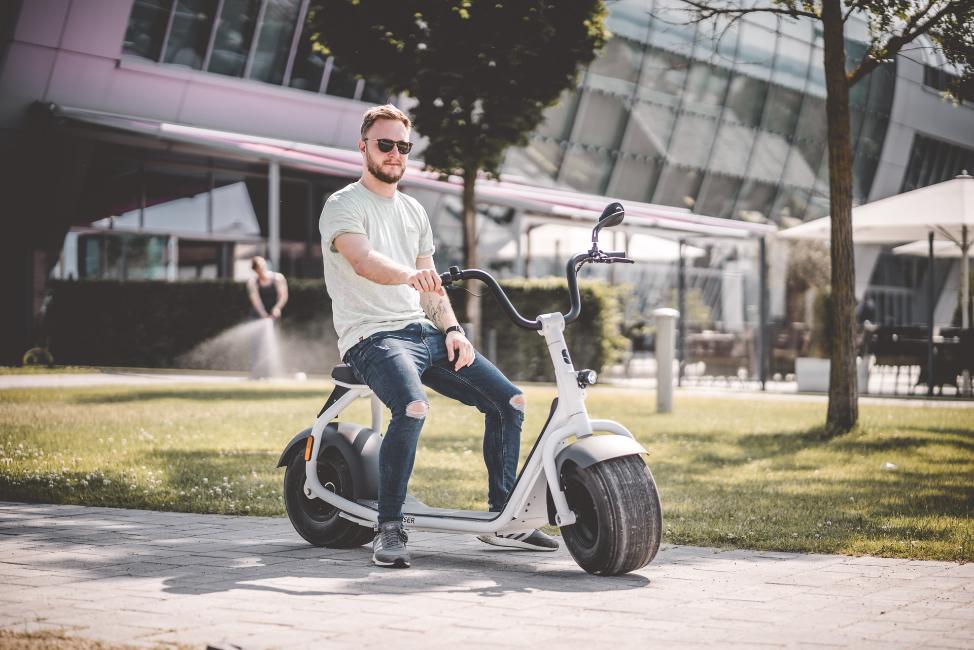
Photo Courtesy: Kumpan Electric/Unsplash
While e-scooters excel in portability, e-bikes are perfect for extra cargo and are capable of holding multiple add-ons. It’s possible to attach baskets on the front and back of cargo e-bikes for grocery trips or to haul your projects to and from work.
Even if your e-bike isn’t meant to hold cargo, you can equip your regular city or commuter e-bike with trailers, rockets, baskets or panniers. E-scooters simply don’t have the space or stability for a large amount of cargo or add-on accessories.
Safety Comparison
It’s difficult to compare safety on the e-scooter or e-bike because they’re only as safe as the operator is at handling them. Safety can vary tremendously based on the make, model, and type of electric vehicle you’re riding.
E-bikes have bigger wheels that can travel over potholes and debris without the fear of bouncing too high or off the seat. These tires can also navigate wet weather, and the heavier frames offer more stability. E-bikes are also more visible on the road.
An e-scooter, however, makes you more agile so you can quickly navigate around pedestrians or cars. You can hop off the scooter if necessary to avoid a severe accident, which is more challenging to do on an e-bike – especially with the motor or battery in the way.
On average, there are more accidents from e-scooter than there are from e-bikes, and it’s likely because of the lack of regulations. Still, e-scooters have larger tires and a better suspension, so day to day use is more comfortable and accessible than on an e-bike.
Another recent study shows that e-bikes have a distinct pattern of severe injuries that result in hospitalization. Overall, e-bikes result in fewer accidents, but the accidents are more severe, whereas e-scooter users are more likely to have accidents that aren’t life-threatening.
Always wear a helmet. Wearing a helmet can reduce many injuries, especially injuries involving the head, neck, and shoulders. If you happen to fly off your e-bike or e-scooter, you can save yourself from a severe concussion or brain injury.
Durability
E-bikes have more direct support if they have a flat tire, a bent spoke, or need general maintenance. E-scooters don’t have the same accessibility because they are less prevalent than e-bikes, so many mechanics aren’t knowledgable on e-scooter components.
To make matters worse, e-scooters aren’t as durable as e-bikes. E-bike manufacturers have the 200-year history of bicycle maintenance under their belt, as well as the decades of knowledge-based around servicing e-bike specific components.
If you want at least a 15-year relationship with your electric vehicle, opt for an e-bike. They’ll often last longer, have better parts, and maintenance is easier. If you own an e-scooter, you will need to learn a lot of maintenance tips yourself.
Are you an e-bike or an e-scooter enthusiast?
Are you interested in many other articles, like this one, that gives in-depth information about different e-bikes and e-scooters?
Visit our website for more information on the best electric bikes and scooters that can make your commute more stylish and fun.
Before you go, leave a comment on your preference – do you like e-bikes or e-scooters more?
Be sure to read one of our other articles about the history of bicycles and e-bikes while you’re at it!
The post Should I Buy an Electric Bike or an Electric Scooter? appeared first on eRide Guides.
]]>The post Electric Bikes for Beginners: Everything you Need to Know Before you Buy! appeared first on eRide Guides.
]]>Due to these advancements, it’s not uncommon to see e-bikes existing with traditional, human-powered bicycles.
Dissecting an electric bicycle doesn’t have to be complicated. In fact, they’re very similar to the first bicycle you used when you were a child. With an added motor, battery, throttle, and drivetrain, you can exceed speeds of 28 mph (45 km/h) without breaking a sweat.
This article will act as an introduction to anyone interested in an electric bike. But first, we need to determine what an e-bike is before discussing its components, laws, maintenance, and more.
What is an Electric Bike?
Let’s look at what an electric bike is by comparing it to a traditional human-powered bicycle. To put it simply, an electric bike is a regular bike with an electrical drive system. This consists of a battery, motor, a way to integrate the motor’s power in the drive train, and a way to control it.
The Propella 7-Speed E-Bike has all the components of a traditional e-bike:

Photo Courtesy: Propella
- Purple Circle: The battery that powers the motor sits underneath the passenger bar.
- Red Circle: The throttle, which controls the power, is similar to a motorcycle handle.
- Orange Circle: Mid-drive motor helps to propel the e-bike forward.
- Green Circle: The drivetrain integrates the power located in the rear wheel.
Without these four critical components, the e-bike becomes a human-powered bicycle. Once you remove these components, an e-bike can become a bicycle as long as there are pedals to move the chain and gears to rotate the wheels.
What is the Difference Between an E-Bike and a Motorcycle?
Although a motorcycle and e-bike look similar from a glance, they are entirely different from each other. The most significant difference is what powers a motorcycle. Electric motorcycles exist, but a gas-powered motorbike has unlimited range, is faster, and has room for an extra passenger.
As a disadvantage, motorcycles are very loud, expensive, and take up a lot of space. They’re also more costly to maintain.
An e-bike costs less, even when compared to the initial price of the purchase, battery replacements, and maintenance. They’re quiet, are parkable virtually anywhere, and benefit your physical fitness.
The only thing you miss out on is the motorcycles’ cool’ factor. But, like how cigarettes have come and gone out of style, so will gas-powered motorbikes.
If you prefer a compact, lightweight mode of transportation that doesn’t require insurance or registration, get an e-bike. However, if you want something more road-worthy with a better suspension and visibility, purchase a motorcycle instead.
What is the Difference Between an E-Bike and a Moped?
An electric scooter (or moped) is a purpose-built machine with electric propulsion. Mopeds look similar to gas scooters with a platform for the user’s feet and a step-through-style base. Some of these scooters are classified as “power-assisted bicycles.”
Despite this classification, mopeds are very different from e-bikes. First, mopeds do not have pedals, so you can’t use them as an exercise apparatus. Mopeds also require a driver’s license in the U.S., insurance, and registration, whereas e-bikes do not.
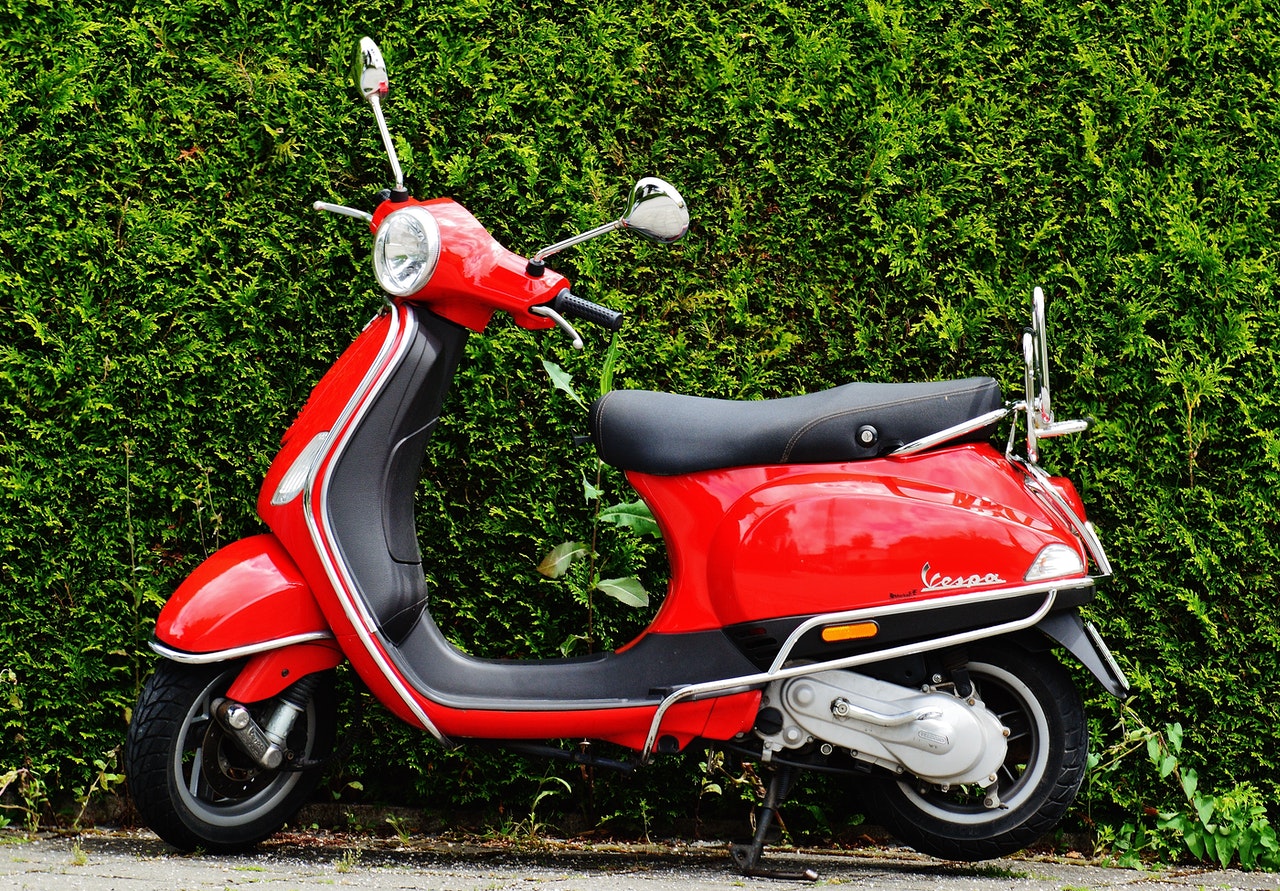
Photo Courtesy: PixaBay/Pexel
Mopeds have a limit to where they can operate. Although they can travel on the street or within bike lanes, they aren’t allowed on sidewalks and can’t park in bicycle areas. An electric bike is still considered a bicycle and can go wherever a human-powered bike can go.
Finally, a moped cannot travel anywhere but within a city. An e-bike can go up a mountain with just the motor alone. If you do want a moped, they can reach higher speeds than a typical e-bike at 30 mph (48 km/h) where an e-bike can only legally cap out at 28 mph (45 km/h).
How do E-Bikes Work?
Mid-Drive
An electric-mid-drive motor is the main component that makes riding an e-bike effortless. This motor type has more torque and higher performance than a traditional hub motor. Since it drives the crank and not the wheel, it takes advantage of the guards to amplify the bike’s power.
Mid-drives are often close to the ground to improve the handling of the e-bike. The lower the mid-drive, the better your center of gravity, as it distributes the weight better throughout the bike.
Battery
You need the battery to operate an e-bike; otherwise, it becomes a regular bike! A typical battery can provide 40 miles (64 km) of riding, but the smaller, more compact designs may only take you 20 miles. You can remove them easily to clean or charge.
Drivetrain
A drivetrain delivers power to the driving wheels and converts torque and speed via the gears. Some drivetrains let you turn the resistance up or down so you can comfortably ride up steep mountains. The dial is typically located around the gears next to the drivetrain.
Throttle
You’ve likely seen a throttle on a motorcycle, and they serve the exact same purpose – it kicks on the motor and lets you control the e-bikes speed. When you turn the throttle forward, the e-bike will drive. The speed of which the e-bike goes is determined by how far forward you twist the throttle.
Not all e-bikes are made the same, but they all have these four components. Most electric bicycles also come with disc brakes, suspension, and pedals.
How do you Ride an E-bike?

Photo Courtesy: Snapwire/Pexel
Some e-bikes have pedals that let you ride like a human-powered bicycle but with the added assistance of a motor to propel you forward.
However, some e-bikes don’t come with pedals. Foldable or small electric bikes tend not to have a pedaling option. Instead, a user would have to place their feet on the spokes where the pedals would be and use the throttles to move forward.
Most e-bikes have either option so the rider can ride without any human component. This is great for office workers who want to arrive at the job without sweating. At the same time, that same office worker could get in some great cardio during their time-off by using the pedals only and no throttle for assistance.
Common Features of an E-Bike
Besides the motor, throttle, drivetrain, and battery, many other features come with your typical e-bike.
Folding
An excellent folding electric bike can store securely within your home, in a car, or on public transport. If your commute requires a quick detour on the subway, or you live in a small apartment or a home without a garage – pick a folding bike.
Folding e-bikes tend to be lighter than traditional, non-folding types. Keep in mind that a great bicycle with a decent motor and battery will still weigh 40 or 50 pounds. Lugging it around will make you stronger!
Braking System
An electric braking system is universal for e-bikes, but when given a choice, always choose disc brakes over conventional types. Disc brakes offer greater stopping power, which is helpful for long descents or during wet weather. They’re also more precise because wheel lockup is less likely.
Electronic Panel
An electronic panel display isn’t necessary, but it can enhance your riding experience. Find one that displays power status, distance, headlights, PAS grades, speed, and error messages. An estimated battery level display can ensure you don’t run out of charge far away from home.
Range
The range of the battery depends on the type of riding you’re doing, so it’s challenging to list a range spec on an e-bike as a sale point. The manufacturer assumes you’ll use an e-bike on a flat sidewalk because you’ll have the most extended range on terrain with minimum effort.
To calculate the watt hours (range) of a battery pack, multiply the voltage by amp hours. A 36-volt 10-Ah battery pack has 360-watt hours (36 X 10 = 360). Each mile costs 20-watt hours on average. Therefore, a 360-watt hour pack will get you 18 miles on one charge.
Tires/Suspension
Suspension isn’t always a given on e-bikes, similar to how cost-effective bicycles don’t have adequate shocks. Instead, e-bike manufacturers will install thicker, more inflated tires to improve stability on bumpy roads or sidewalks.
Common Accessories for an E-Bike
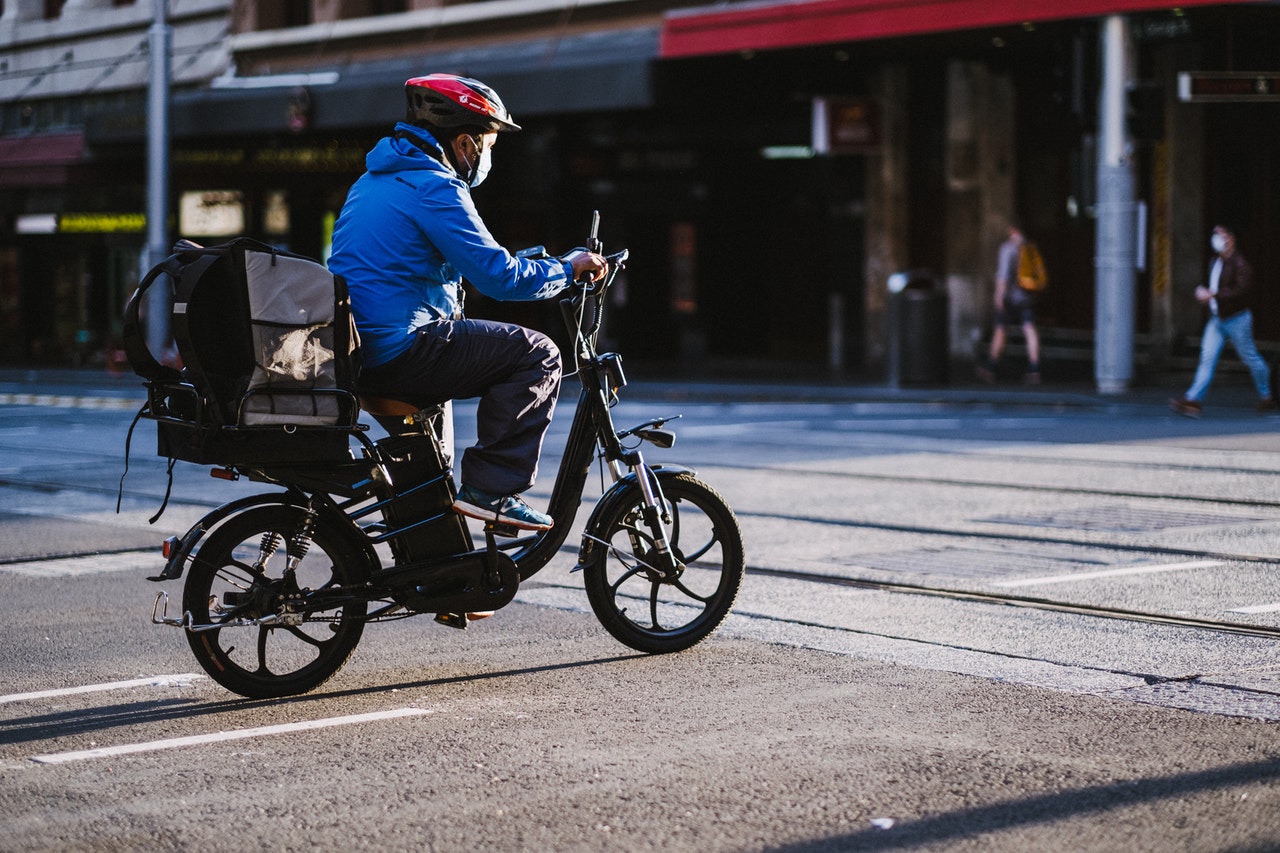
Photo Courtesy: Kate Trifo/Pexel
Are you thinking of adding a few accessories to your e-bike, so it stands out from the crowd?
Consider these items to improve your safety and the look and feel of your bike.
- Helmet: Safety is essential. Since e-bikes exceed 20 mph (32.19 km/h), a crash could be fatal. Use a DOT helmet made for motorcycle users to protect your noggin from falls.
- Side Mirrors: Most e-bikes don’t come with mirrors, but they’re vital to your safety. Equip them to the end of your handlebars on each side for maximum visibility.
- Lights: If you ride at night, you need headlights for safety. Pick up taillights too so vehicles can see you in the dark on country roads or alleyways.
- Basket: You could use a backpack, but if you don’t want to get your back sweaty put a front basket that’s deep enough to store three bags of groceries.
- Suspension Seatpost: Great suspension is only found on expensive e-bikes. For anything other than high end, get a suspension seat for a smoother ride.
We also recommend grips for your handlebars, fenders to protect your chains, and pop-off pedals so your e-bike can fit easier in cars or public transit. Always buy bike tools for standard maintenance and repair jobs.
Growing Popularity of E-Bikes
Every year the popularity of e-bikes is increasing by more than 60% on average worldwide. In 2019, e-bike sales rose 73% at specialty shops. The more popular models are pedal-assisted, move at 20 mph (32.19 km/h), and fold.
E-bikes are the fastest-growing segment in the cycling market, with over $100 million in sales in the United States as of 2019.
“E-bikes are making recreation and transportation easier in cities and urban locations across the United States,” said Taldi Harrison, the government and community affairs manager for REI. “E-bikes are a dependable option for people of all backgrounds and help make getting outside-accessible for all.”
About half of all e-bikes sold are bought by people who never considered themselves cyclists, or who haven’t ridden a bike in years. E-bikes broaden the audience for who can use motorized transportation without the setback of a clunky or expensive car.
However, there is a downside to this rapid popularity spike. There are virtually no laws in place to regulate the use of motorized bicycles.
Laws and Regulations
The US Laws and the Lack of Regulation
At the federal level, the U.S. Consumer Product Safety Commission regulates e-bikes for product safety for manufacturing at the first sale. Without clear guidelines, many states adopted outdated rules governing e-bikes that treat them as an extension to human-powered bikes or motorcycles.
Some have no regulation what-so-ever, so individual states tend to suggest a 20 mph (32 km/h) max speed. This loose approach has led to multiple injuries that were easily avoidable. From 2000 to 2017, 245 million injuries occurred from electric scooters or bicycles.
The Rapid Need for Legalization of the 3-Class System
Since 2014, the national bicycle advocacy group PeopleForBikes helped over 30 states pass standardized regulation for e-bikes using the 3-Class System. This model legislation defines three standard classes of e-bikes based on wattage, speed, and operation.
Class 1 and Class 2 are usually allowed where pedal bikes are allowed, but Class 3 bikes are typically reserved for road use only. In Europe, a cyclist must place a highly visible sticker on the frame to indicate an e-bike’s Class.
In 2015, California was the first state to adopt the 3-Class System, but since then, 26 states now define e-bikes in a Three Class structure. The graphic below outlines where states have proper legislation, which are acceptable and problematic and need work.

Photo Courtesy: Katrina Dent
Legislated states use the 3-Class System. Acceptable states have no age limit, no licensing registration, and e-bikes are treated as bicycles. Finally, problematic states treat e-bikes as motor vehicles and have confusing laws and practices that aren’t found in state law.
Different Types and Categories
Most countries follow the 3-Class system to dictate the difference between the different types and categories of e-bikes. These classes are further broken down into terrain subclasses determined by the motor and battery application and use.
The 3-Class/Type System
Here is a breakdown on which e-bikes classify Class 1, Class 2, and Class 3 under the legislation.
- Class 1: Assists pedaling but not your throttle, these e-bikes are passive and are allowed to function on bike paths. Pedal-assist only (absolutely no throttle), and have a maximum assisted speed of 20 mph (32.19 km/h).
- Class 2: Known as low-speed throttle-assisted e-bikes. These e-bikes have motors that proper the cyclist without pedaling. The rider cannot exceed more than 20 mph (32.19 km/h) like Class 1, except Class 2 e-bikes must be throttle-assisted.
- Class 3: Known as speed pedal-assisted electric bikes and assist the rider if they’re pedaling. Cannot have a throttle. Class 3 e-bikes can have a maximum assisted speed of 28 mph (45 km/h). However, the U.S. only allows bikes on the road that have a maximum of 20 mph (32.19 km/h).
All e-bikes, no matter the Class, limit the motor’s power to 1 horsepower (750W).
Terrain Classes
E-bikes are separated between two types of terrain: rough trails and leisure. Most e-bikes are geared towards leisure activity because consumers use these to go to and from work. Mountain bikes are useful for rural communities where cars are expensive or inaccessible.
Rough Trails:
Similar to a traditional bike, e-bikes are capable of cycling up steep hills for an extended period with the proper battery and motor (750w minimum preferred). These bikes are available at hardtails or full suspension. The full suspension is better for rougher ground.
Leisure and City:
All e-bikes can function spectacularly on flat land or in a cityscape because they were initially designed for this purpose. To get the most out of the battery and motor, calculate your weight against the wattage of the battery. For example, a 110-pound woman can use a 250w battery to its fullest extent, while a 150-pound woman should use a 500w or more for better results.
Some companies have a hybrid category of leisure and rough, but it’s better to buy a bike specifically for its purpose because it will perform better. If you find that you share your time between mountain biking and leisure, then purchase a hybrid. Otherwise, pick one or the other.
Speed and Pedaling
The speed of an e-bike depends on the Class number, battery, and motor. Most e-bikes range from 20 mph (32.19 km/h) to 28 mph (45 km/h). Anything faster than that is illegal in multiple U.S. states. Use the below chart to determine max speed vs. batter and motor.
| Battery + Motor (Flat Terrain 165 lbs Male) | Max Speed | Average E-Bike Cost | Average Charge Time |
| 250w | 20 mph (32.19 km/h) | $500 – $1000 | 20 minutes |
| 500w | 25 mph (40.23 km/h) | $750 – $1250 | 40 minutes |
| 750w | 28 mph (45 km/h) | $750 – $1500 | 60 minutes |
| 1000w | 35 mph (56.32 km/h) | $1000 – $1500 | 80 minutes |
| 1500w | 40 mph (64 km/h) | $1500 – $2000+ | 120 minutes |
* Green is within legal limits, red is considered illegal by many U.S. states
If the e-bike has a pedal assist, it’s possible to exceed your bike’s maximum speed as long as you remain pedaling. However, pedaling excessively could damage the motor if you’re consistently going above the max speed and using the throttle in tandem.
Safety Tips
Although e-bikes are a great way to get around, they still require attention to ensure your fun ride doesn’t become dangerous. Many electric bicycle safety tips apply to standard cycling, while others are specific to motorized vehicles.
- Wear A Helmet
- Use Headlights and Taillights
- Use a Horn or Bell to Warn Other Pedestrians
- >Don’t Ride Against Traffic
- Use Bike Lanes Where Possible
- Keep Tires Properly Inflated
- Practice Defensive Driving
- Use Your Mirrors
Above all, never ride drunk. Although bikes do not require a license to operate, you can still get seriously injured if you’re not 100% aware of your actions. It isn’t worth it. Fold your bike into a cab, if possible, or walk your bike home on the sidewalk.
Insurance
Insurance for e-bikes does exist, but it isn’t necessary to purchase in the United States. The policy cost depends on your coverage, but we recommend liability coverage to cover third party damages like property or medical expenses.
However, there are many things insurance won’t cover, like a stolen battery, manufacturer malfunctions, or theft of the entire bike.
Homeowners and renters insurance will not cover electric bicycles. Auto Insurance also won’t cover an e-bike (only other motorized vehicles like mopeds or motorcycles) because you don’t require a license to operate it. You will need to seek out third-party insurance coverage.
Average Lifespan
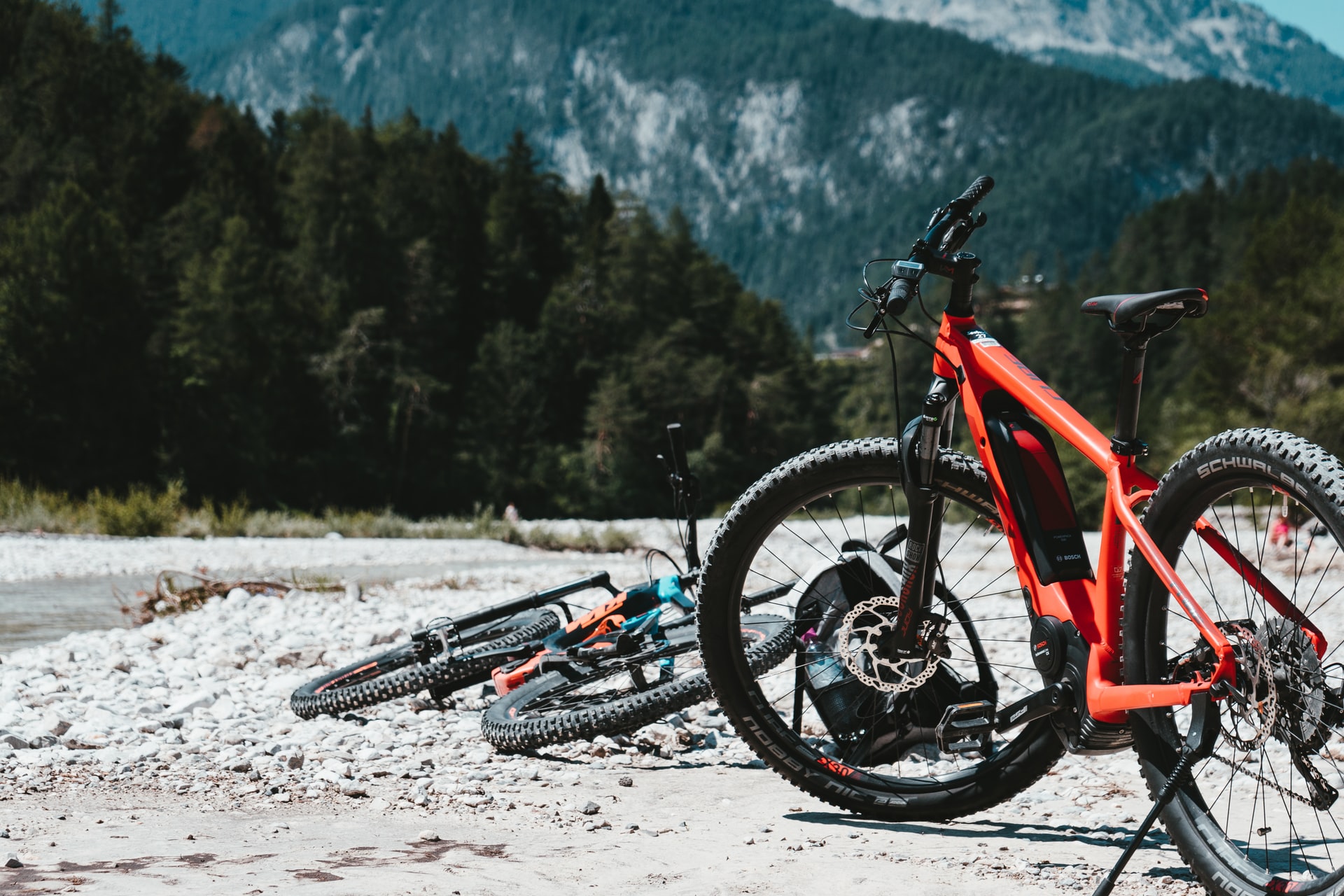
Photo Courtesy: Julian Hochgesang/Unsplash
A quality e-bike made of lithium-ion or lithium-polymer technology is usually capable of 1K full-charge-discharge cycles. However, most users don’t use their e-bike until it’s dead. Therefore, an average user will get three to five years out of one electric bike battery.
The average lifespan of your e-bike could diminish if you take poor care of the motor, battery, and drivetrain. Use these tips to extend the life of the electronic components on your e-bike.
Maintenance
Schedule A Weekly Cleaning: Regular cleaning to keep off the dirt, dust, and debris from getting into the engine should be your priority as an e-bike owner. It helps keep the mechanical parts functioning. However, never use a pressurized hose or stream of water because it could expose jetting liquid into the electrical system – causing it to malfunction.
Lubrication: Similar to a steel bicycle chain, the e-bike chains and gears need proper lubrication, or else it will rush, seize, or break. You should use a special cleaning solution specific for cleaning bike chains. For example, if you use WD-40, the oil will fly up onto your pants as you ride. Do this once a week if you bike often.
Tire Pressure: The tires’ sidewalls should inform you of the ideal pressure for that tire type. Check the pressure by using a pressure gauge – don’t just eyeball it because you risk too little traction or bloated tires. Inflate them properly for a smoother ride.
Check the Bolts: While you’re cleaning, check for any loose nuts, bolts, or screws. Use your fingers to check the tightness. If you can screw the bolts off with your fingers, they’re way too loose. Don’t tighten the bolts too much, or you won’t be able to get them off!
Battery: The most critical electrical piece on your e-bike is the battery, so treat it as such. Read the manufacturer’s instructions before changing it, or you could damage the battery or the bike. Know that battery replacement can be expensive, so take care of it by protecting it against rain, dirt, and debris.
Brakes: Check these every few weeks by pumping them at slow speeds. It’s essential to have effective brakes on any motorized vehicle. Otherwise, you could be in a severe accident. Brake pads are easy and cheap to replace if necessary.
Storage Tips: Always keep your e-bike in a cool, dry place away from any potential rain or harsh weather conditions. It’s better to keep it indoors, either in a garage or in your home. Keep the bike off the ground during the winter, so it’s less likely to get knocked or ruined.
Is an E-Bike a Good Investment?
Electric bikes make riding convenient and effortless. You may wonder if the point of getting a bike is for the exercise, but the real reason to use an e-bike is to get from point A to point B comfortably and inexpensively.
Although e-bikes will never wholly replace a regular bike or a car, it can eliminate the barriers that stop people riding, such as hills, distance, or health. You won’t have to worry if you’re strong enough, have enough endurance, or enough confidence to get back on the road.
If riding represents stress-reduction, freedom, better health, enjoyment, and free time, an e-bike will be a good investment for you, especially if you want to add a bit more exercise to your life and reduced car traffic.
Are you an e-bike enthusiast?
Are you interested in more in-depth articles on e-bikes? Stay on our website for more content.
Before you go, leave a comment about your thoughts on owning an e-bike, or read one of our other articles about the average electric bicycles top-speed.
The post Electric Bikes for Beginners: Everything you Need to Know Before you Buy! appeared first on eRide Guides.
]]>The post Electric Bikes vs. Regular Bikes: The Differences Explained appeared first on eRide Guides.
]]>At first glance, they look very similar to each other but, upon closer inspection, you can start to see how the technology on the e-bike is just as different as it is similar to a regular bike.
To put it simply, an electric bike is a regular bike with an added drive system. The drive system consists of a motor, battery, and a way to steer the motor’s power into the drivetrain. Although the cost of an electric bike is similar to a regular bike, maintenance on an electric bike is often more expensive. However, the speed of a traditional bike is usually a lot lower for typical users.
Let’s take a closer look at the attributes that truly set the two bikes apart, including speed, rules and regulations, riding experience, appearance, and maintenance.
First, let’s look at the history of the traditional bike and its electric counterpart.
Over 200 Years of Bicycle History
Overview
In 2017 the bicycle celebrated it’s 200 birthday. The bikes’ impact on our culture and tradition is unprecedented because it created mobility where there previously wasn’t.
Although the automobile took a significant portion of the traditional bikes market share, it wasn’t until the e-bike that the regular bike saw a substantial cut in its profits.
With over one billion bicycles in the world, the traditional bike is the most common mode of transport worldwide by a large margin. The passenger car looks meager in comparison to only 500 million.
Looking at Germany, there are over 81 million bikes and only 45 million cars, with 3 million of those bikes consisting of electric bikes, scooters, or other electric assisted vehicles.
It’s easy to see why bikes have gained popularity in part of its mobility and economical design. The bicycle quickly replaced stagecoaches and turned nobility on its head.
No longer were the bourgeoisies the only class that could comfortably ride long distances. It’s likely that without the traditional bike, automobiles wouldn’t exist in their current form.
The Invention of the Traditional Bicycle
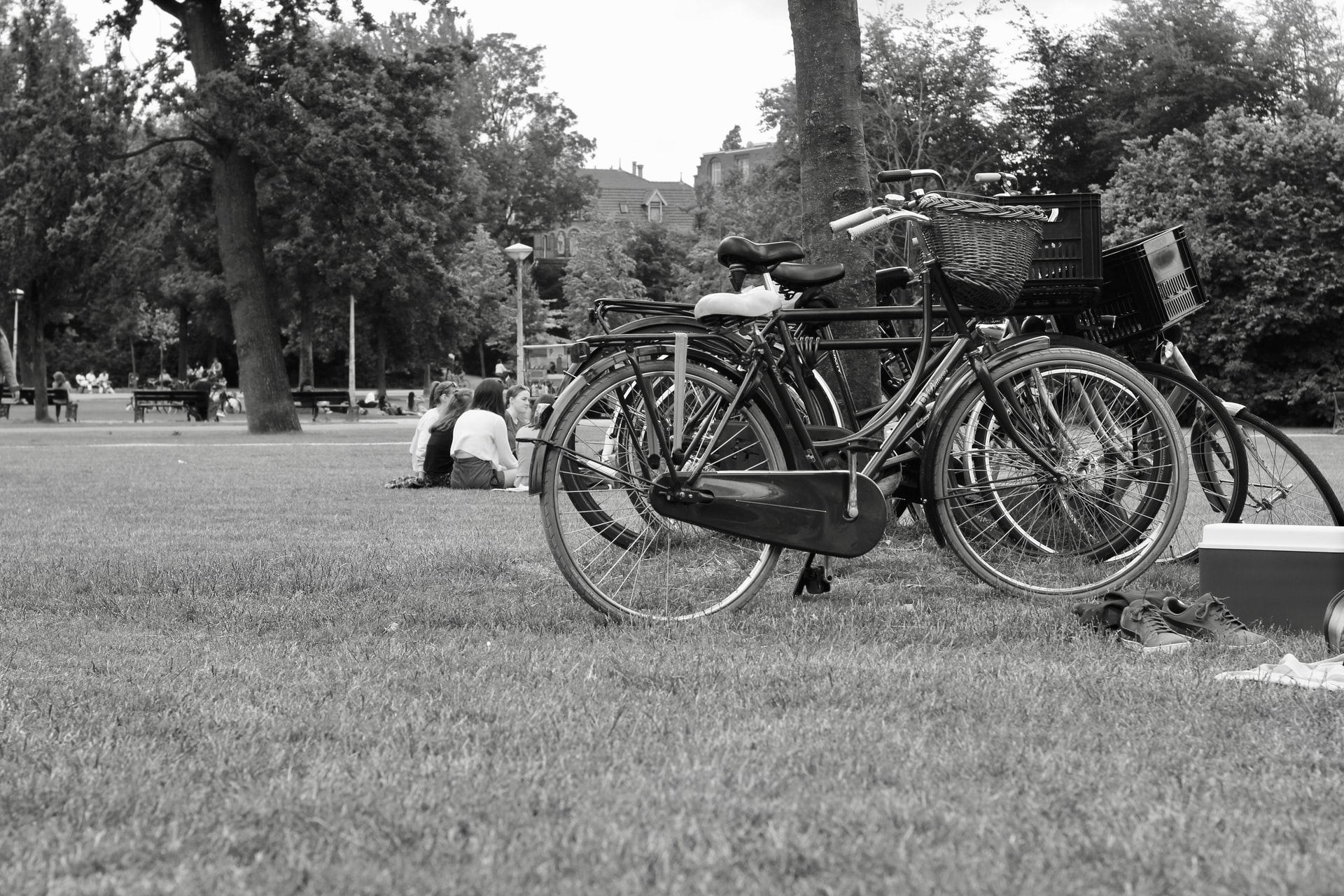
Photo Courtesy: Louis Hansel @shotsoflouis/Unsplash
The first bike prototype was called the running machine or dandy horse created in 1817 by Karl Drais. It had no pedals and could only propel with kicking the road beneath it. In 1860, the crankset and pedals were mounted on the dandy horse by Pierre Michaux. The first bicycle prototype, created by John Kemp, was built in 1885.
Visionary Robert Bosch and the Bosch group are responsible for many add-on inventions to the modern bicycle. In 1890, Robert Bosch popularized biking in Germany and the rest of Europe by riding a High-Wheeler, which had a large front wheel and a tiny rear wheel for stabilization. In 1903, the hub gear system invented by Erst Sachs was the first mass-produced part.
Back to the Bosch company in 1923, the invention of the dynamo lighting system produced over 20 million units by the 1960s and allowed commuters to bike at night.
The derailleur system, invented by Tullio Campagnolo in 1948, was a style-setting influence for years to come – even during the birth of the mountain bike in 1973.
In the modern area of 1993, Yamaha mass-produced the crank-drive pedelec motor to support and reinforce active pedaling.
Since then, inventions have been focused on e-bikes. Regardless of which bike is featured, Bosch has remained the European market leader in bicycles since 2013.
The Invention of the Electric Bicycle
Electric bikes don’t have as long as history as traditional bikes, but inventors have attempted to make e-bikes roadworthy since 1895, but it wasn’t possible until the modern era.
For one, the heavyweight of the electrically driven wheels coupled with the batteries’ low range made e-bikes useless until the invention of the lithium-ion battery in 1991.
It’s now possible to ride over 62 miles (100 km) on a single charge, and with the mass production of electric bikes, motors, and batteries, the technology is more accessible than it ever has been.
Pedelecs are actively shaping city landscapes and making us rethink how to use and maintain proper cities and transportation.
Technical Differences Between an E-Bike and Regular Bike
Electric bikes have electrical components, whereas a regular bike has mechanical components. They both work in similar ways, except the electric bike has the additional drive system, which consists of a motor, battery, a way to control the power, and a way to integrate said motor’s power into the drive train.
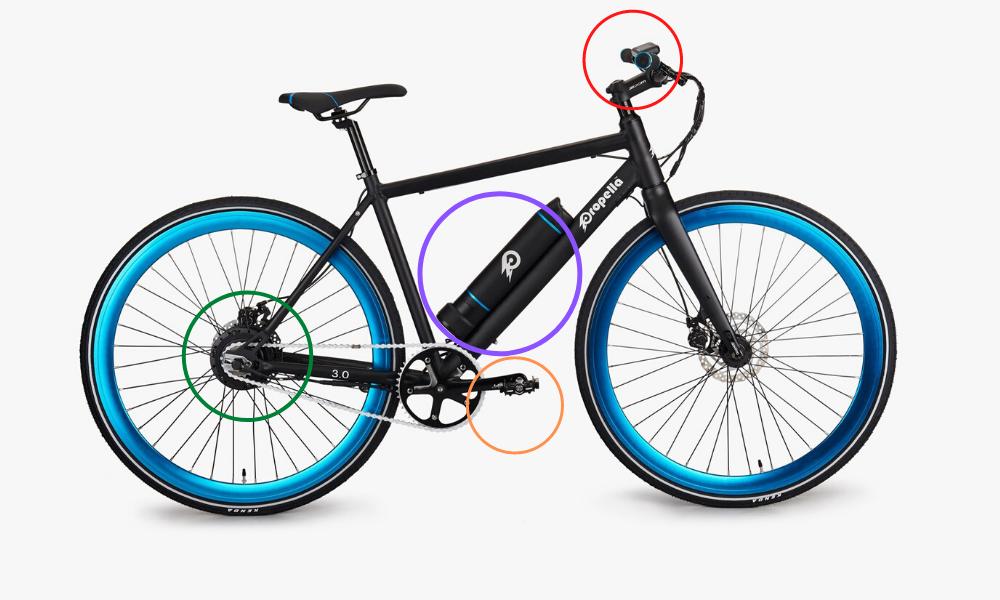
Photo Courtesy: Katrina Dent/Propella
Take a look at the Propella e-bike. It looks similar to a traditional bike, but the color circles indicate the electrical differences. The red circle highlights the throttle, the orange circle shows the mid-drive motor, the green circle is the drivetrain, while the purple circle is the battery that powers the motor in the rear.
Mid-Drive Motor
Although some e-bikes use hub-motors, the mid-drive motor was invented to improve on the short-comings of the hub-motor.
For one, mid-drive motors have a more significant gear ratio so that the rider can power the rear wheels with the same chain and gear set. Mid-drive motors are great for riding up steeper hills and are unlikely to overheat.
Weighing only 5 lbs, the mid-drive motor packs a lot of punch and acts as the motor to power the e-bike. Mid-drives allow for true torque sensors for pedal-assist systems (like the Propella) to regulate the motor power based on how hard you push.
Its center of gravity is close to the ground to improve handling while distributing the weight easier throughout the bike.
Battery
The most expensive and heavy component of the bike, the typical electric battery can provide up to 40 miles (64 km) of riding, but multiple factors determine the true scope, range, and power of the battery.
There are 4 common types of batteries on the market: lead-acid, nickel-cadmium, nickel-metal hydride, and lithium-ion.
Lithium-ion batteries are becoming the default battery because they produce more power output and weigh significantly less than the other options.
Most importantly, they’re durable and will last longer. Although this component is costly, it’s more than worth it because it knocks other batteries out of the park when it comes to range, weight, and longevity.
Drivetrain
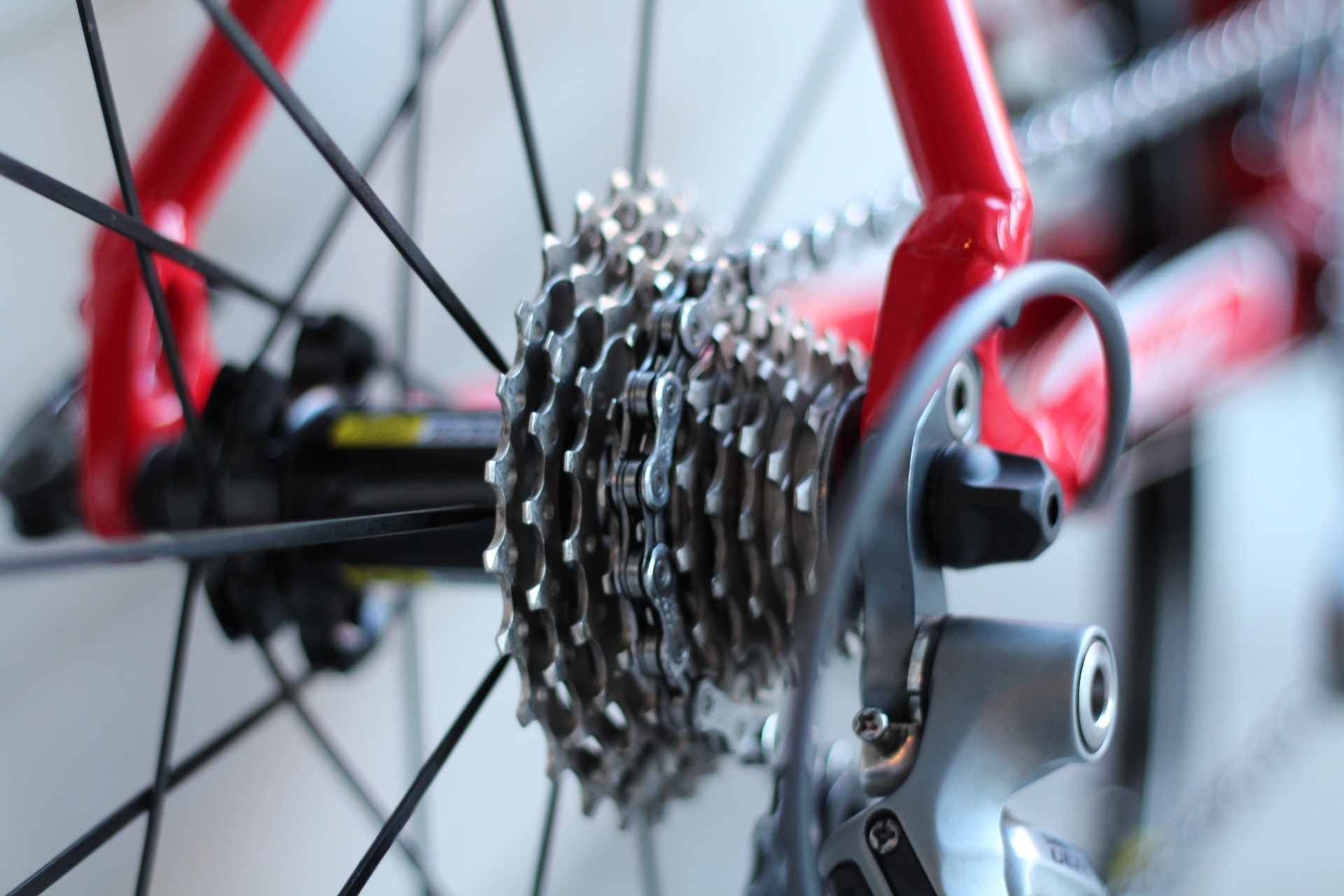
Photo Courtesy: Wayne Bishop/Unsplash
The drivetrain delivers power to the driving wheels and converts torque and speed via the gears. Many e-bikes on the market allow you to ‘turn up the dial’ to adjust the gears on the drivetrain, so you’re able to scale steeper hills.
To protect against accelerated wear on the drivetrain, the power in the motor is typically limited to around 250-500 watts.
A significant drawback of an e-bikes drivetrain is that it has to be charged (though not on a regular basis) while the traditional bicycle drivetrain doesn’t.
An uncharged drivetrain won’t be able to shift gears. As a benefit, the drivetrain, when charged, will remain consistent while switching gears because there are no cables that could slop or stretch over time.
Throttle
Most e-bikes have two modes: throttle mode and pedelec mode. Where the pedelec mode works similar to a traditional e-bike and uses pedals to propel forward, the throttle mode on an electric bike works identical to a motorcycle throttle.
The throttle engages the motor and provides power and moves you and the bike forward.
A throttle component allows e-bike users to sit back and let the bike do all the work. Some e-bikes allow for both the throttle and pedelec modes to engage at the same time.
This will enable commuters to go above the top speed of the bicycle while getting some exercise in the process. Not all countries allow for the throttle feature on bikes.
Except for the above 4 components, all other parts on an e-bike are the same as a traditional bike. E-bikes still have a frame, disc, brakes, two wheels, a seat, suspension, pedals (in most cases), and handlebars.
Electric Bike Display
It’s uncommon to find an electric bike with a display – especially if you’re riding anything under $1000. However, you can always buy an electronic bike display and hook it up to your battery and motor for accurate readings on the range, battery level, speed, distance, and trip distance. Traditional bikes hardly ever come with a display, and it typically isn’t as advanced.
More expensive e-bikes offer additional bike display features, such as tracking sat nav/GPS and fitness tracking. These displays can help you quickly interpret how many calories you’re burning in a session and location, as well as the overall health of your bike.
I recommend you purchase an e-bike with a display to better understand your e-bikes range, max speed, and battery level as it helps with general maintenance.
The Differences in Riding Experience
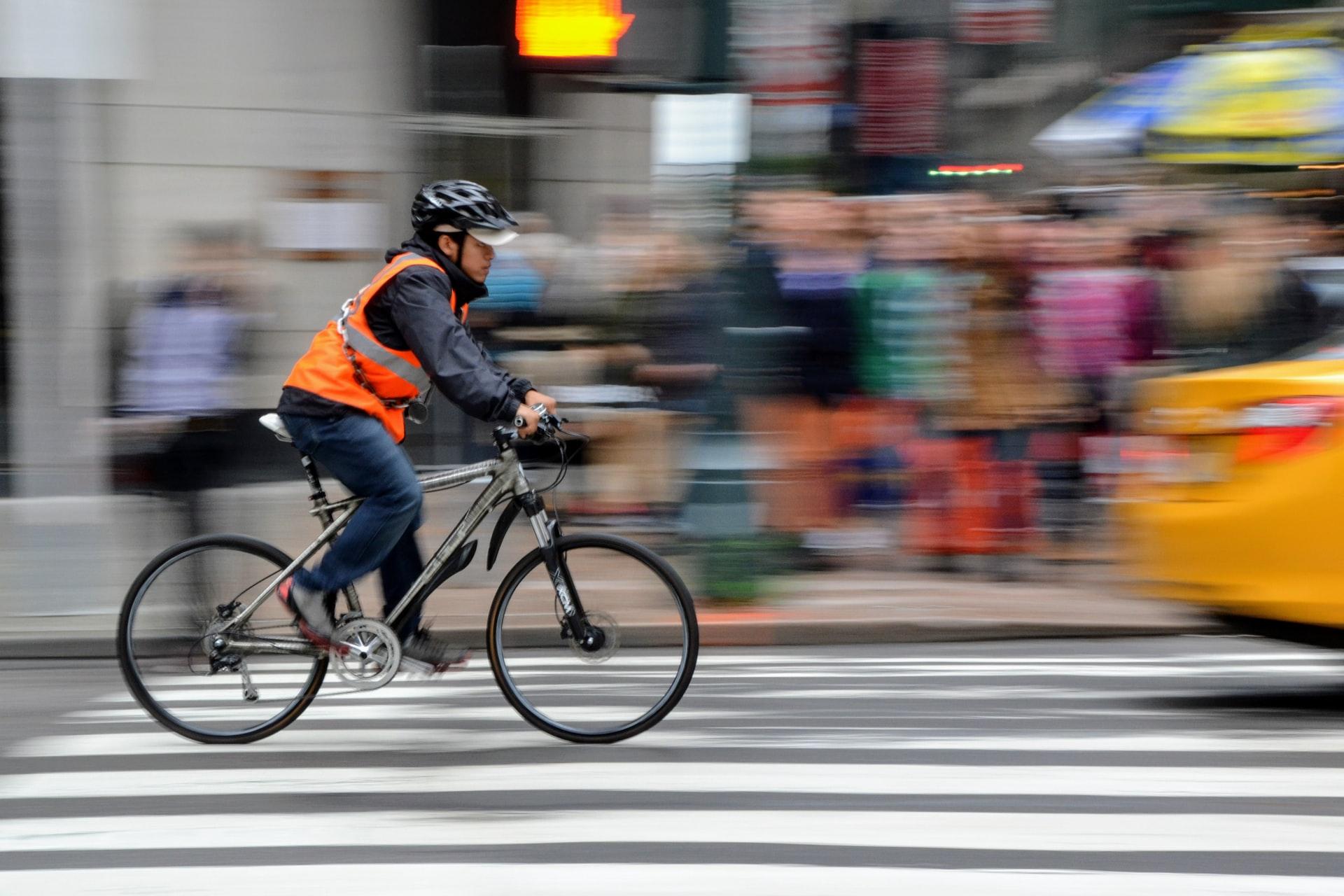
Photo Courtesy: Javier de la Maza/Unsplash
Although there aren’t many differences between an electric bike and a traditional bike, the riding experience can be vastly different. Whereas an e-bike commuter can choose not to use the throttle and ride it like a conventional, albeit a heavier bike, the traditional bike can only act as an ordinary bicycle and only use the pedals to propel itself.
The major shortcoming of a traditional bike is its accessibility. Maybe you want to be fit, but you’re not quite there yet. Perhaps you want to ride a bike to work to save on gas money, but you’re concerned about arriving to work sweaty.
Or, maybe a heart disease or other physical impairment prevents you from participating in a more active lifestyle.
The electric motor solves these problems. No matter how windy, how long, or how far your commute is, the motor will help you arrive at your destination.
If you want to bike, but halfway to your destination you’re exhausted, you can use the throttle to coast the rest of the way.
Riding a bike gives you the freedom to ride unencumbered by traffic or the size of the road. You also don’t have to worry about the price of gas (just electricity for an e-bike).
Electric bikes add that extra bit of freedom to all because it’s an accessible and fun activity.
Fitness vs. Convenience
Let’s get this out of the way: riding an e-bike, even one that isn’t pedal-assisted, isn’t cheating your health or fitness levels. The automobile was invented to solve the problem of a long-distance commute without the reliance on horses.
E-bikes fill that need for those who can’t afford cars in the big city while also providing a means of accessible transportation.
I’m a cyclist, but if I have to take a 40 mile (64 km) round-trip to a friend’s house or work, I reach for the car keys instead.
If I’m feeling tired, I’m more likely to use the path of least resistance, especially if the road ahead is hilly.
With an electric bike, I can make the same trip with minimal effort if I choose only to use the throttle. I can do errands easier, and quicker, because I don’t have to wait in traffic or find somewhere to park. It also saves me money on gas.
Instead of looking at a traditional bike vs. electric bike and riding vs. not riding, look at it as a fun, convenient, and accessible way to travel. With a pedal-assisted e-bike, I can also get my exercise in if I choose to.
Maintenance and Repairs
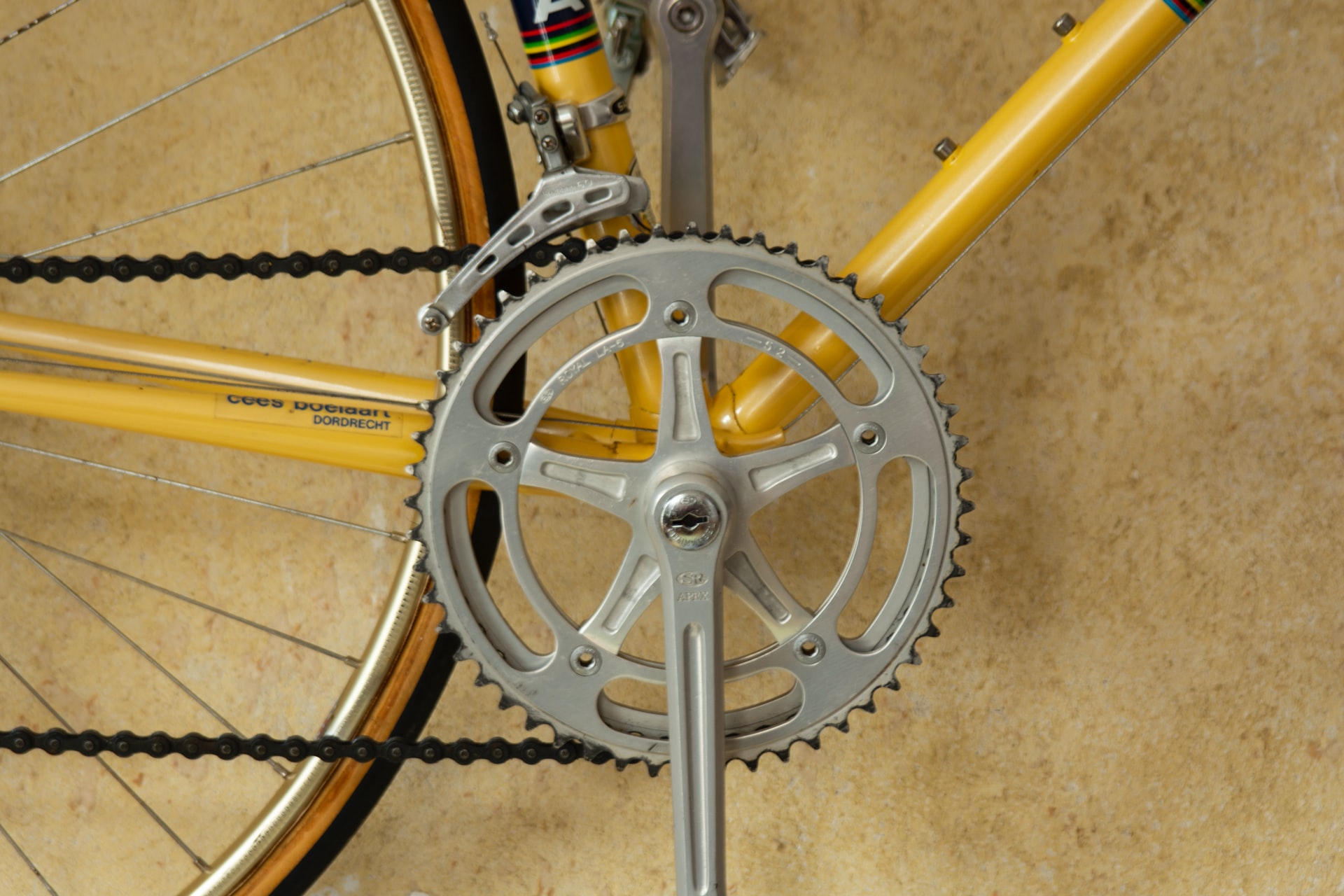
Photo Courtesy: Jeremias Radny/Unsplash
The traditional bike and e-bike require frequent maintenance, but the e-bike could cost more if the battery or motor is damaged. Overall, the cost of maintenance and repairs is similar.
Keep Your Bike Clean
Clean both your bike and e-bike regularly to maintain the look and overall health of your vehicle. Both the traditional bike and e-bike can use diluted dish soap and rags to wipe down the frame gently.
Try not to use soap or water on gears or other components that could rust, or they may erode and require a replacement.
While cleaning an e-bike, you will need to be more careful, or you risk damaging or destroying the electrical components. Always take the battery out, and clean carefully around the motor, battery container, and drivetrain.
Both the traditional bike and e-bike can be polished with a bicycle wax to add an extra layer of protection over the frame and paint.
Lubrication
To keep all gears in good working order, apply lubrication to the moving parts such as the chain and brake. Use a special cleaning solution to wipe off dirt or mud on these components before applying lubricant.
Both the traditional bike and e-bike need lubrication in the same locations once a week.
Inflate Tires
Both the traditional bike and e-bike need properly inflated tires at all times. It’s important to check tire pressure at least once a week and check tires for uneven wear or puncture holes.
E-bikes can come with airless tires, so tire pressure won’t be an issue in this case. However, it is still essential to check for wear on airless tires.
Check Brakes
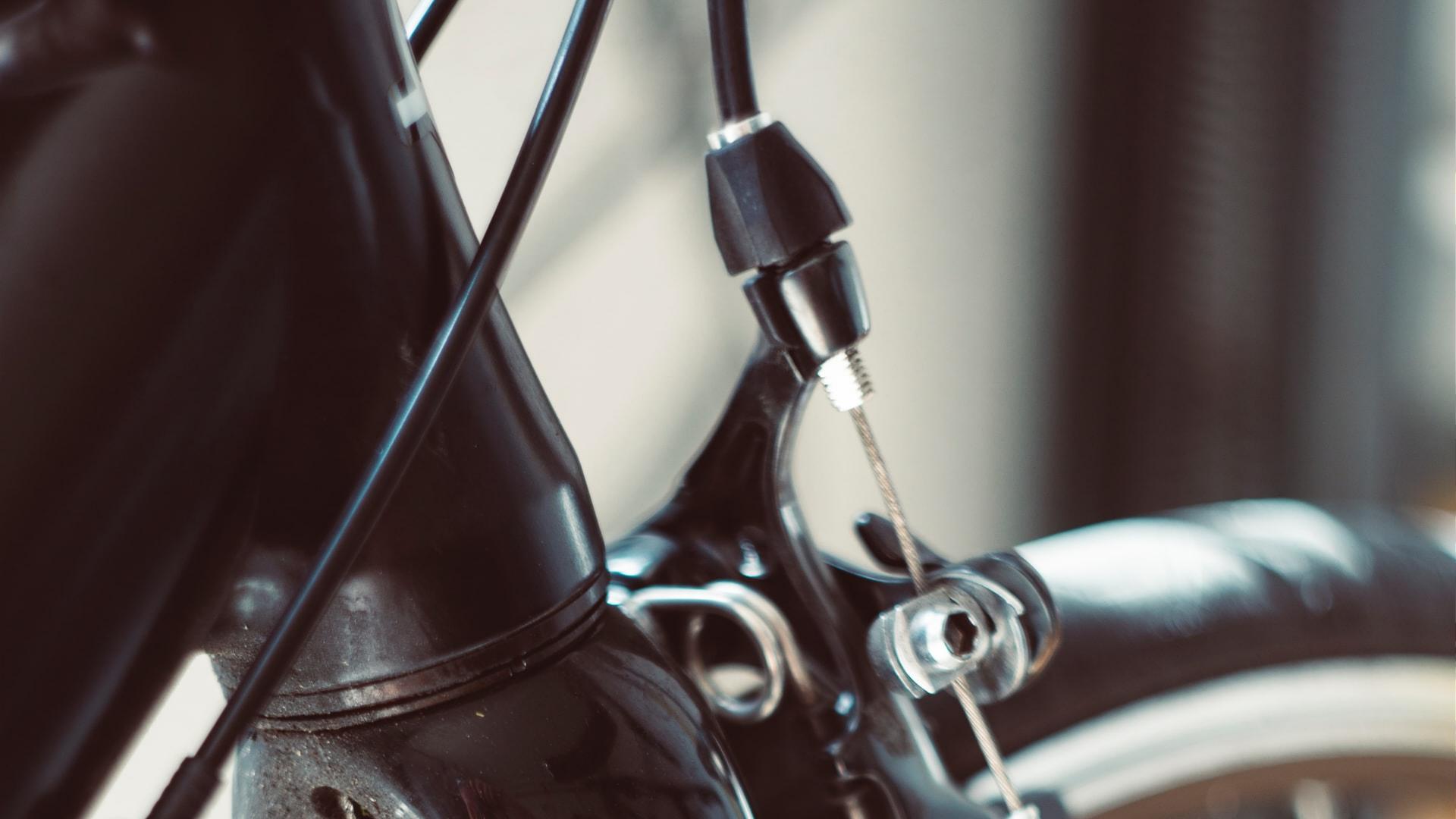
Photo Courtesy: Markus Spiske/Unsplash
On a traditional bike, the brakes are connected through a series of cables. Instead, an e-bike uses brake pads similar to an automobile to stop quicker at fast speeds.
For brake cables, check if there are any tears and that the connection isn’t loose or severed. For brake pads, check for wear and tear, and that the nubs on the pads aren’t too worn down.
To test either kind of brakes, ride at less than 8 miles (12 km/h) and pump the brakes. Notice how fast you stop and if you need to adjust the brakes stopping power.
It’s always better to test your brakes before riding (especially on an e-bike) to prevent potential accidents.
Tighten Nuts and Bolts
Every week, check all the nuts and bolts on your bike and tighten any that look loose. To quickly determine which nuts and bolts require tightening, use your fingers to try and loosen screws.
If they come apart easily, they are too loose and need a wrench to tighten them. Never use your fingers to tighten nuts, bolts, or screws because they won’t stay that way long-term.
Battery and Motor
Unique to the e-bike is maintenance on the battery and motor. Always read the manufacturer’s instructions to properly preserve both parts long-term.
Since battery and motor replacements are expensive, ensure that water, dirt, or dust doesn’t get inside its components. Always remove both parts during storage or in colder temperatures.
Average Speed

Photo Courtesy: Anthony Gilbert/Unsplash
As of writing this, the world record bicycle speed is 183.9 mph (295 km/h) broken by Denise Mueller-Korenek, 45, and with a draft provided by a dragster.
The average cycler doesn’t achieve speeds close to that at 9.6 mph (15.5 km/h) on a flat surface. A fit rider can maintain speeds of 25 mph (40 km/h), which is also the average speed of a moderately priced e-bike.
An e-bike, unless it’s rigged to do so, doesn’t exceed speeds of 40 mph (64 km/h) with a throttle. In the United States, an e-bike cannot exceed speeds of 28 mph (45 km/h) legally either on the sidewalk or street.
Although it is possible for a human-powered bicycle to exceed 28 mph and 40 mph, you cannot do so unless you’re exceptionally fit.
If you’re not racing, e-bikes might make your ride faster (and arrive at your destination less sweaty).
This is because the e-bike’s motor makes pedaling feel effortless so you won’t get tired as quickly. An e-bike also helps to maintain a constant speed.
Rules and Regulations
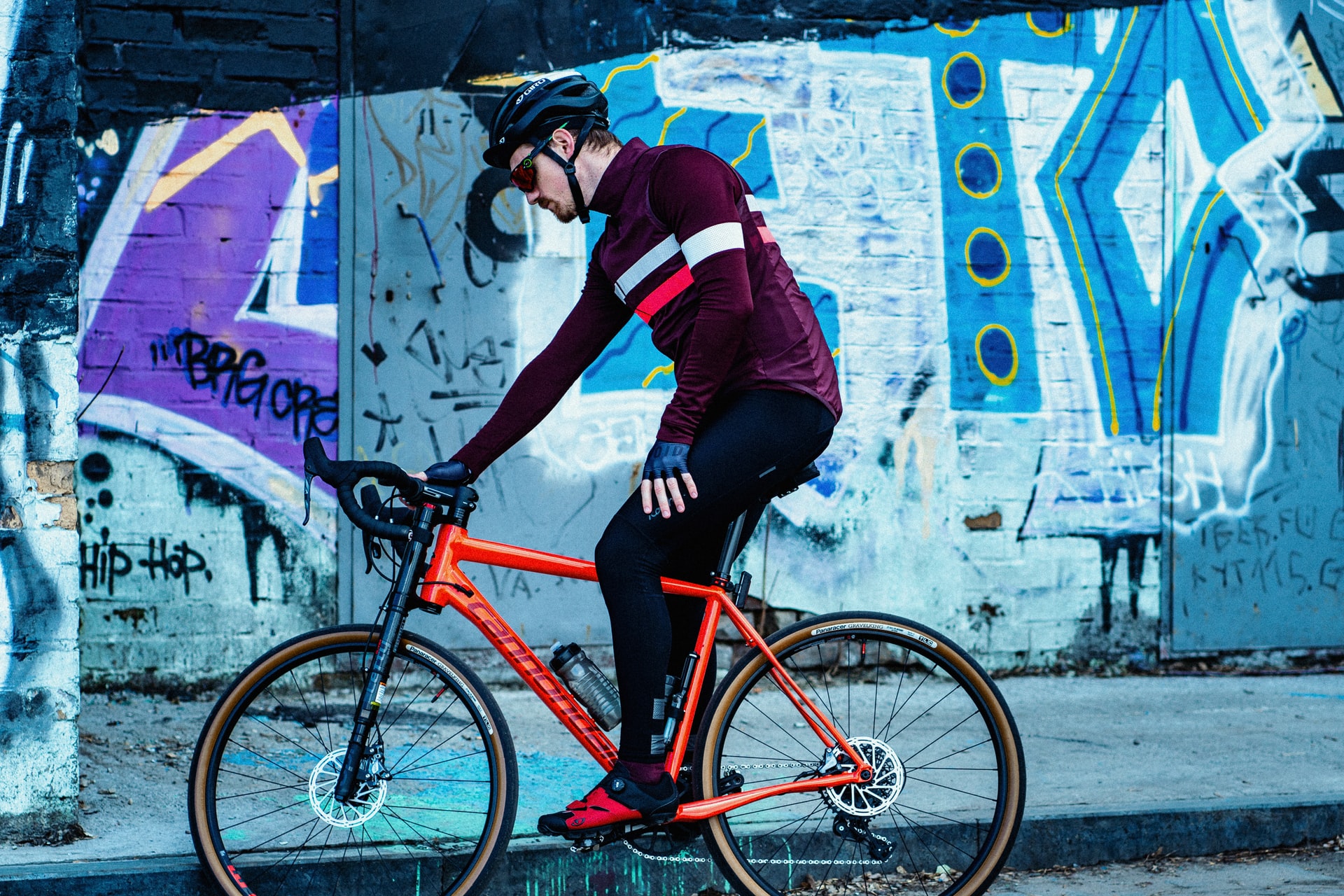
Photo Courtesy: Victor Xok/Unplash
Although there are rules and regulations for a traditional bike, these rules don’t carry the same weight if you break them compared to e-bikes.
Traditional Bike
In the US, all bicycles must have lights between sunset and sunrise to improve visibility and reflectors so other vehicles can see you. Brakes are also mandatory, but only one functioning brake is necessary for US bylaw.
The requirement to wear a helmet in the US varies based on jurisdiction and age, but it’s usually a good idea to wear on if you’re riding in traffic.
As a general rule in the United States, all bikes must ride on the right-hand side of the road and never against the traffic flow. You must occupy the same space as motor vehicles and never on the sidewalk unless there is a designated bike lane.
Since a bicycle is considered a slow-moving vehicle, you must position yourself as far right as possible so cars can pass you.
Hand signals are required to inform cars where you plan on turning. As an alternative, you can buy electronic signals or brake lights.
Breakings any of these rules usually results in a slap on the wrist (at most a ticket) unless you cause a significant accident.
E-Bike Regulations
E-bike regulations include bicycle bylaws but start to become more complicated depending on where you live. In most states, e-bikes are considered either motorcycles or slow-moving electric vehicles.
Some states, like California, have their own classification for e-bikes. As of writing this, there is only one US state that requires an e-bike license for operation (while other states either don’t require one or only accept another license like an M or Class 3).
Many states are looking to implement the 3 class system, which puts different e-bikes in 3 different classifications. Creating appropriate e-bike laws is a slow-moving process, but most states are starting to implement this system.
Since all e-bike regulations pass at a state level, the rules vary depending on where you live.
The minimum age of riding and the necessity for helmets is another contested topic. While some states require a minimum age between 14-18 to operate an electric bike, others have no minimum or distinction between class 3 bikes (any e-bike that can travel 28 mph (45 km/h).
Although helmets aren’t necessary to wear in all states, I recommend you wear one anyway!
Overall, e-bike laws are confusing in the United States, but are more straightforward in Europe and Canada as the requirements are consistent throughout their states and provinces.
Always check your state laws before operating an e-bike.
Are you an e-bike or bicycle enthusiast? What to read more about e-bikes and e-scooter? Stay on our website for more in-depth articles on electric transport.
Before you go, leave a comment on what you think about the differences between traditional bikes and e-bikes, or read one of our other articles about the top speed for an e-bike.
The post Electric Bikes vs. Regular Bikes: The Differences Explained appeared first on eRide Guides.
]]>The post 6 of the Best Electric Bikes for Commuting to Work or School appeared first on eRide Guides.
]]>An electric bike would be ideal for long rides, where you want to stay comfortable and have a speedy trip.
The Premium electric bikes that are designed with commuters that have long trips, like to and from work, in mind are the Dost Drop electric bike and Vanmoof’s Vanmoof S3.
1. Dost Drop Electric Bike – Speed and Long Distance for a Price
Dost’s Drop electric bike is designed around traveling not only vast distances but also moving at high speeds.
The Drop electric bike is designed with commuters that have to go a considerable distance regularly. A feature that I find fantastic is the 28 MPH max speed that the Drop bike can achieve!
DOST
The Dost electric bike is perfect for longer commuters because of not only the dual batter option but also because this bike is designed for comfort. Everything from the wheels to the broad saddle to the integrated rear rack is perfect for longer rides.
The wheels are Schwalbe Super Moto X, which provide not only extra stability when riding but extra cushioning for the rougher roads.
The seat included in the Dost electric bike is a gel-filled comfort saddle which is wider to provide more comfort for longer rides.
The fantastic features that the Drop electric bike provides do come at a cost, the Drop electric bike with the single battery, which limits the distance substantially, costs $2,799 while the Drop electric bike with the dual batteries costs $3,148.
This significant price limits who will be buying this bike, but if you have that kind of extra cash and are looking for the top of the line electric bike the Drop bike is a perfect choice!
If you are looking for a premium electric bike but want to keep the cost away from the $3,000 price range, then the VanMoof S3 is another premium electric bike that commuters will enjoy!
2. VanMoof S3 – Long Distance and Security
The VanMoof S3 offers a classic design that utilizes some fantastic innovation that allows it to provide not only an excellent top speed but also the ability to ride for an extended amount of time!
While the VanMoof S3 may not offer the 120 miles per charge like the Drop electric bike, the VanMoof S3 does provide a significant amount of range of up to roughly 90 miles and has some added features that might make the VanMoof S3 look perfect for your commuter needs.
VanMoof
One unique feature that the VanMoof S3 has is that you can lock this bike through the VanMoof app. This electric bike utilizes a kick lock, which completely immobilized the rear wheel and activated the onboard alarms with just a tap of a shoe.
The VanMoof S3 also comes with remote lockdown and a smart location tracking, which are perfect for users that may just chain up their bikes on a bike rack, now even if they get the chain off, the electric bike still won’t move.
Not only can you lock this bike through the VanMoof app, but it also offers substantial customization, including changing the gear change moments to the digital bell sound the bike has.
Another fantastic feature that makes the VanMoof S3 unique is the industry-first E-shifter included in the electric bike. This electronic gear shifter makes the ride to and from work a lot smoother when compared to other electric bikes.
The VanMoof S3 is less expensive when compared to the Drop electric bike, but the VanMoof S3 still costs a fair amount being priced at $1,998. While that price definitely makes this electric bike in the more premium pricing range.
If you are looking for a more value derived bike, then either the Level Commuter Ebike or the RadRunner 1 would be ideal as both are below the $2,000 price tag.
3. Level Commuter Ebike – Smooth Ride and Up to 28 MPH
The Level Commuter Ebike is designed with the commuter in mind, not only because of the name, but also the high top speed, good average miles, and the suspension included to keep you riding for longer with little-to-no discomfort.
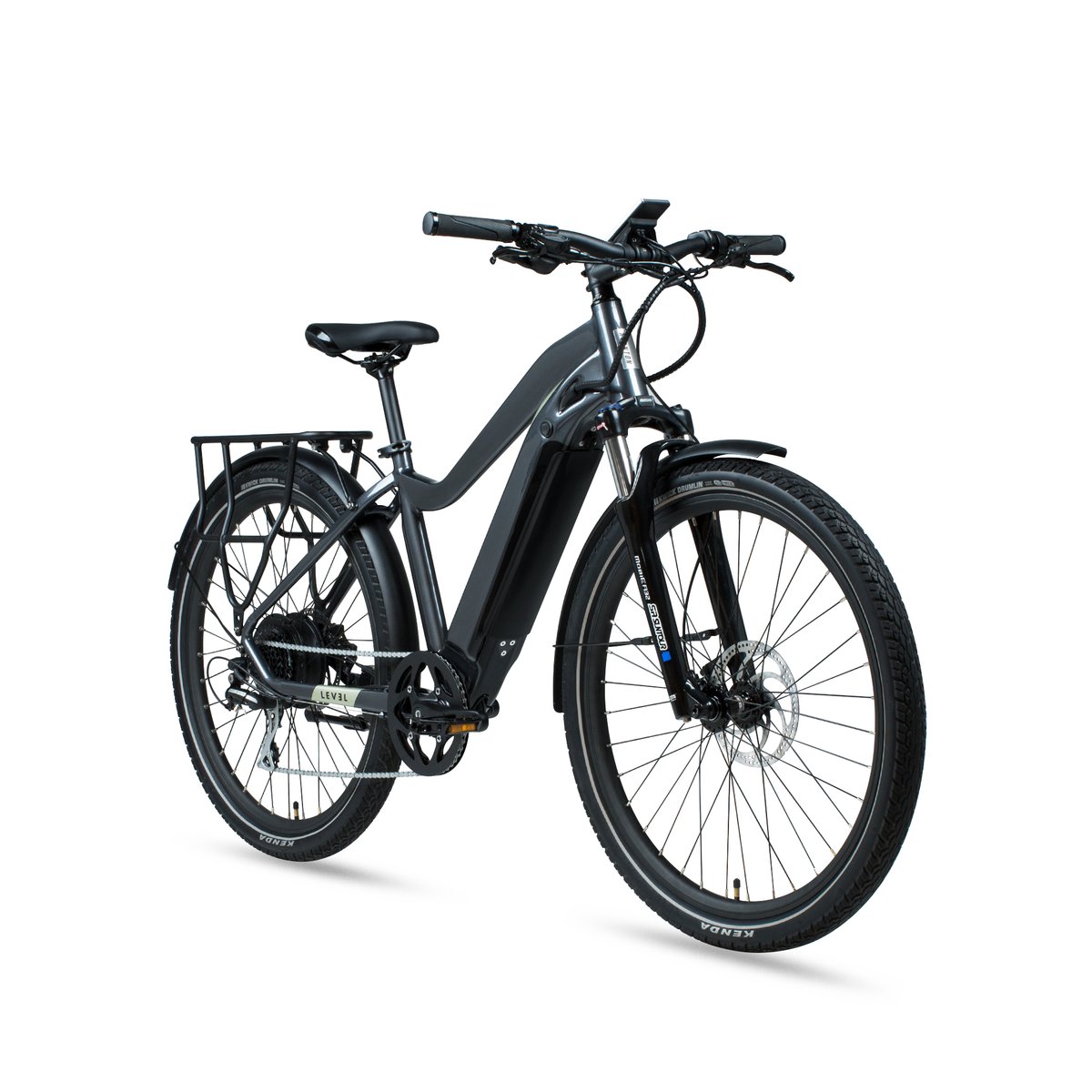
Aventon
The Level Commuter Ebike offers three different sizes. This is perfect as I am a medium for this bike while you may be a large or even a small! This eBike features a suspension fork, which has a total of 75 mm of travel.
When you want to have the smoothest possible ride, the installed suspension fork is a perfect addition to any rider!
This suspension fork is designed to keep the ride smooth for the rider, even if the road features some potholes and bumps. In addition to the suspension fork, the Level Commuter Ebike is a Class III Electric Bike, meaning that its top speed is 28 MPH when using pedal assist.
If you get tired even with the pedal-assistance, you can stop pedaling and instead let the bike do all the work for you!
The Level Commuter Ebike is less expensive when compared to the VanMoof S3, being priced at $1,599 while still offering some fantastic features for the lowered cost.
4. RadRunner 1 – Modularity So Everyone Can Enjoy
If riders are looking for modularity, then the RadRunner 1 is ideal as it offers a total of 330 accessory combinations.
The RadRunner 1 features a different design when compared to the previous eBikes, as it features a Low-Step Frame.
Rad Power Bike
For distance, RadRunner 1 offers up to 45 miles per charge, allowing even long-distance commuters to quickly get to and from work/school with little to no issue. This long-distance is powered by the 48-volts and 672 Wh, which is rated for 800 charge cycles.
RadRunner 1 features an intelligent four-level pedal assist with a low profile cadence sensor, and an intuitive LED display that quickly shows crucial information to the riders like battery charge level, pedal assist level, and a light indicator.
RadRunner 1 lowers the cost even further as it is priced at just $1,199. If you don’t want to pay in a lump sum, then this bike can be bought with Affirm, where it is $39 a month.
If you are looking for a bike that costs below $500, the next two electric bikes would be a perfect choice; these are the two bikes that even I would be able to fit underneath my college’s desk when not using them!
5. SwagTron EB5 – An eBike for City and Campus use
The SwagTron EB5 is an eBike designed for either city or campus use, as shown in the foldable design and the lower top speed when compared to other electric bikes on this list.
The high speed of the SwagTron EB5 Pro is 15.5 MPH using just the throttle and offers a range of up to 15.5 miles.
The lowered speed and lowered range are ideal for city and campus use that has the majority of locations very close, therefore, enabling this bike to last all day with little to no issue.

Swagtron
Since the EB5 comes pre-assembled, which enables you to start using the bike right after receiving it, and the foldable design allows this bike to fit into the smallest of spaces easily.
This means riders can easily use this eBike to commute to and from work.
The SwagTon EB5 is currently out of stock on Swagtron’s website. The EB5 is priced at just $499, while the MSRP for an electric bike like this is $600.
6. SwagCycle Pro Folding Electric Bike – Pedal-free and App Controlled
The least expensive electric bike that offers some robust features is the SwagCycle Pro. The Swag Cycle Pro offers not only the foldable design but is an entirely pedal-less design as well.
This pedal-less design allows this electric bike to fold up, enabling it to fit into small spaces quickly and easily.
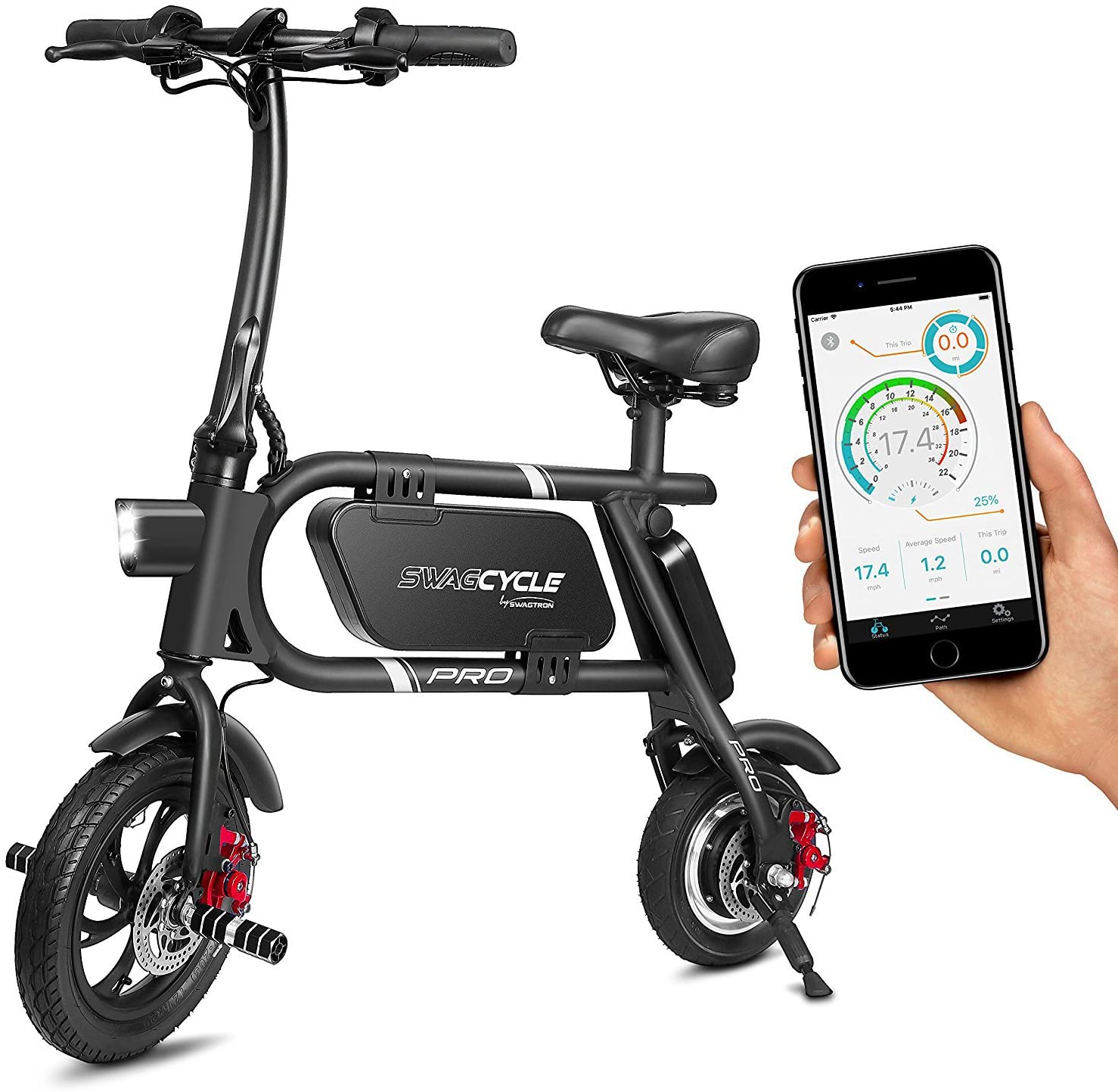
Swagtron
This bike’s sturdy frame can support up to 264 pounds and offers extreme torque enabling the eBike to feature a top speed of 18 MPH and easily tackle inclines of up to 12 degrees with its zero-emission motor.
This bike is perfect for the commuter in a large city or on campus, as the smaller tires that are featured on this bike make paved roads the ideal terrain.
This eBike has app control, which allows you to easily track your trip, speed, GPS location, and even more!
The SwagCycle Pro is currently available on Amazon for the low cost of just $399 that is significantly less expensive when looking at any of the other bikes on this list.
Electric bikes are becoming much more common, especially for commuters and college students, with that more price ranges for eBikes are becoming available.
With the higher-end electric bikes costing up to $3,000 and the budget-friendly bikes can cost just $300 or so, this means that even college students can purchase them without having to save up for the four years of college!
The post 6 of the Best Electric Bikes for Commuting to Work or School appeared first on eRide Guides.
]]>The post How Fast Do Electric Bikes Go? A Quick Guide to Battery Size and Speed appeared first on eRide Guides.
]]>Although e-bikes can help expand the sport to a new audience, there is some confusion about how fast they can actually go, and how fast is too fast.
So, how fast is an electric bike?
E-bikes have the capacity to go faster than 28 mph (45 km/h), but there are laws in place to prevent them from doing so. There are many other ways to increase the speed of a 500w e-bike, 1000w e-bike, and a 1500 bike without rigging the motor.
To ensure that you’re buying an e-bike that’s within the law, pay attention to the legislation in your country or state. Before we discuss the legality of speed, let’s examine how to get the fastest bike possible no matter your bicycle’s weight or size.
How Fast Can A E-Bike Go?
The most common questions concerning e-bikes are about their speeds. Since e-bikes have a motor, they can reach higher speeds than a pedal bike where the average cyclist can reach 12-15 km/h (7.5-9.3 mph) from pedaling using their own weight.
In Europe, an e-bike can have a maximum power of 250 watts and a maximum speed of 25 km/h (15.5 mph). E-bikes in the US can have a maximum power of 750 watts and a max speed of 32 km/h (20 mph).
Most of these speeds are reachable with assisted pedaling, but some more expensive e-bike brands will reach that speed without it.
Not all e-bikes can reach speeds of 30 km/h (18 mph) or more because its motor doesn’t support it. To determine how fast your e-bike can go, a three-class certification method was developed to properly legislate the speed to which an e-bike can have on the sidewalk or road.
Motors Assistance to Speed
The motor will almost always determine electric bicycle speed. Most people think the higher the wattage, the faster the bike, but that’s far from the truth.
Determining your motors’ assistance to speed requires you to calculate your weight versus power.
Let look at the example of a 110-pound woman who plans on biking up a hill. She won’t need a lot of power under the hood, because she is light enough to get up the hill without much peddling or throttle. 250-watts would be more than enough to suit her needs.
On the other hand, a 155-pound woman who wants to ride up a steep hill may need something better than 250-watts. If you don’t live in the United States, a cyclist that weights 155-pounds could use a 500-watt motor, but a 750-watt is ideal.
Battery Capacity and Calculating Range + Speed
| Battery + Motor (Flat Terrain 165 lbs Male) | Max Speed | Average E-Bike Cost | Average Charge Time |
| 250w | 20 mph (32.19 km/h) (G) |
$500 – $1000 | 20 minutes |
| 500w | 25 mph (40.23 km/h) (G) |
$750 – $1250 | 40 minutes |
| 750w | 28 mph (45 km/h) (G) |
$750 – $1500 | 60 minutes |
| 1000w | 35 mph (56.32 km/h) (R) |
$1000 – $1500 | 80 minutes |
| 1500w | 40 mph (64 km/h) (R) |
$1500 – $2000+ | 120 minutes |
* Green is within legal limits, red is considered illegal by many US states
Although it’s common to find batteries that range from 500w – 1500w for electronics, e-bikes battery sizes commonly come in 250w, 500w, and 750w. As lithium-ion batteries power most e-bikes, we can assume that yours will too.
Watt-hours is one way to measure the energy capacity of a bike, and calculating it is simple. To start, multiple the voltage by the amp hours of the battery back. If a battery is 36-volt with 10-ah battery pack, multiply the two (36×10=360) to get 360. Therefore, you can get up to 18 miles with a 360 watt-hour pack.
Let’s take a look at some of the most common battery fits for an e-bike:
How Fast Does a 250w Electric Bike Go?
A 250w electric bike goes approximately 20 mph (32.19 km/h) on flat ground.
How Fast Does a 500w Electric Bike Go?
A 500w electric bike goes approximately 25 mph (40.23 km/h) on flat ground.
How Fast Does a 750w Electric Bike Go?
A 750w electric bike goes approximately 28 mph (45 km/h) on flat ground.
How Fast Does a 1000w Electric Bike Go?
A 1000w electric bike goes approximately 35 mph (56.32 km/h) on flat ground.
How Fast Does a 1500w Electric Bike Go?
A 1500w electric bike goes approximately 40 mph (64 km/h) on flat ground.
Peddling
Not all e-bikes give you the option to pedal, but those that do give you more opportunities to reach top speed. Depending on your purchase, you will need a different pedaling effort, and some will assist you more than others.
If you want full assistance while riding your bike, opt for a Class 2 or 3 (more on that later), but if you’re going to work out while cycling, try the Class 1. If you do use a Class 1, you won’t be able to go as fast as Class 2 or 3 assisted.
Use a Class 2 or 3 with pedaling with the throttle on, so when you use the pedals, the e-bike will propel farther than if you completely automize your commute—biking as hard as you can make it less likely to wear you out because the e-bike will do most of the work for you.
Type of Terrain
E-bikes are separated between two types of terrain: rough trails and leisure. Most e-bikes are geared towards leisure activity because consumers use these to go to and from work. Mountain bikes are useful for rural communities where cars are expensive or inaccessible.
Rough Trails:
Like a traditional bike, e-bikes are capable of cycling up steep hills for an extended period with the proper battery and motor (750w minimum preferred). These bikes are available with hardtails or full suspension. The full suspension is better for rougher ground.

Photo Courtesy: Maxfoot / Pixabay
Leisure and City:
All e-bikes can function spectacularly on flat land or in a cityscape because they were initially designed for this purpose. To get the most out of the battery and motor, calculate your weight against the wattage of the battery. For example, a 110-pound woman can use a 250w battery to its fullest extent, while a 150-pound woman should use a 500w or more for better results.
The US Laws and the Lack of Regulation
The U.S. Consumer Product Safety Commission regulates e-bikes from a federal level to protect product safety for manufacturing at the original sale.
Without clear guidelines, many states adopted counter-productive rules governing e-bikes that treat them as an extension to human-powered bikes or motorcycles.
Some have no regulation what-so-ever, so individual states tend to suggest a 20 mph (32 km/h) max speed. This loose approach has led to multiple injuries that were easily avoidable. From 2000 to 2017, 245 million injuries occurred from electric scooters or bicycles.
The Rapid Need for Legalization of the 3-Class System
Since 2014, the national bicycle advocacy group PeopleForBikes helped over 25 states pass standardized regulation for e-bikes with the use fo the 3-Class System. This model legislation defines three standard classes of e-bikes based on wattage, speed, and operation.
Class 1 and 2 are usually allowed where traditional bicycles are allowed, but Class 3 bikes are typically reserved for road use only. In Europe, a cyclist must place a visible reflective sticker on the body to indicate an e-bike’s Class.
In 2015, California was the first of many states to adopt the 3-Class System, but since then, 26 states now define e-bikes in a Three Class structure. The graphic below outlines where states have proper legislation, which are acceptable and problematic and need work.

Photo Courtesy: Katrina Dent
Legislated states use the 3-Class System. Acceptable states have no age limit, no licensing registration, and e-bikes are treated as bicycles. Finally, problematic states treat e-bikes as motor vehicles and have confusing laws and practices that aren’t found in state law.
The 3-Class System
Here is a breakdown on which e-bikes classify for Class 1, Class 2, and Class 3 under the legislation.
- Class 1: Assists pedaling but not your throttle, these e-bikes are passive and are allowed to function on bike paths. Pedal-assist only (absolutely no throttle), and have a maximum assisted speed of 20 mph (32.19 km/h).
- Class 2: Known as low-speed throttle-assisted e-bikes. These e-bikes have motors that proper the cyclist without pedaling. The rider cannot exceed more than 20 mph (32.19 km/h) like Class 1, accept Class 2 e-bikes must be throttle-assisted.
- Class 3: Known as speed pedal-assisted electric bikes and provide assistance to the rider if they’re pedaling. Cannot have a throttle. Class 3 e-bikes can have a maximum assisted speed of 28 mph (45 km/h). However, the US only allows bikes on the road that have a maximum of 20 mph (32.19 km/h).
All e-bikes, no matter the Class, limit the motor’s power to 1 horsepower (750W).
The Dangers of Superfast E-bikes
It’s tempting to retro-fit an e-bike to go faster than 20 mph (32.19 km/h) to get from point A to B as quickly as possible. However, because there isn’t proper legislation in place in all 50 states, riding a bike that exceeds 20 mph (32.19 km/h) is dangerous for you and other pedestrians.
Superfast illegal e-bikes fall into three categories:
- Chipping/Tuning: Older e-bikes could remove the speed limiter and/or turn the wheel spokes sideways to disable it. The user would then fit a small electronic device to make it run illegally fast. While these bikes generally won’t go any faster than 28 mph (45 km/h) it’s still enough to seriously hurt or kill a person.
- Off-The-Shelf-Models: Some companies will advertise bikes that exceed speeds of 28 mph (45 km/h) even though they can’t be sold as e-bikes legally. To sell these e-bikes, companies won’t elude that bike speeds exceed legal limits.
- Retro-fit kits: Customers will buy ready-made-kits that allow them to change the motors’ top speed with the software. Legal kits are available to the public, but some or most of them can be rigged to reach illegal speeds.
While faster e-bikes have their place, it’s important to have legislation so chipping or retro-fitting vehicles are harder to access. Or as an alternative, these bicycles could be classified similarly to mopeds or motorcycles if they go much faster.
Proper legislation can effectively avoid a lot of accidents, some of which have resulted in death. In Europe, a cyclist modded a legal e-bike to exceed speeds of 28 mph (45 km/h) and killed a Hackney pedestrian.
It was the first prosecution of its kind, but many more deaths could occur is e-bikes aren’t registered, or those who use them aren’t licensed to do so.
Are you an e-bike enthusiast?
Are you interested in legislating e-bikes to maintain proper speeds in all states?
Visit PeopleForBikes for more information, and share our article to get the word out.
Before you go, leave a comment on what you think about the 3-Class System, or read one of our other articles about how to determine if an e-bike is waterproof.
The post How Fast Do Electric Bikes Go? A Quick Guide to Battery Size and Speed appeared first on eRide Guides.
]]>